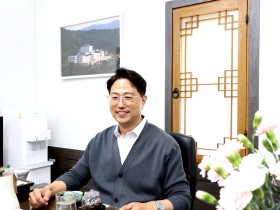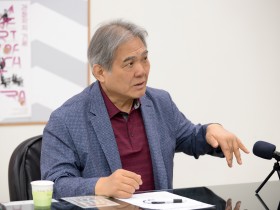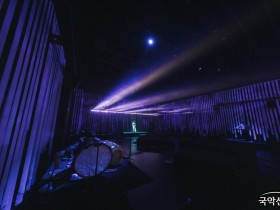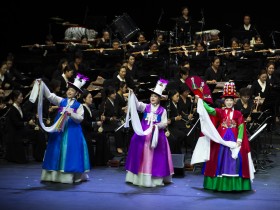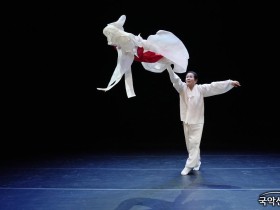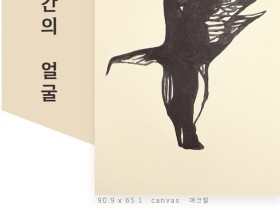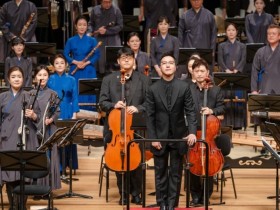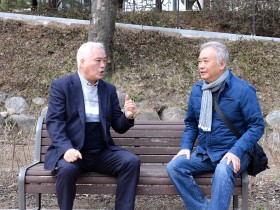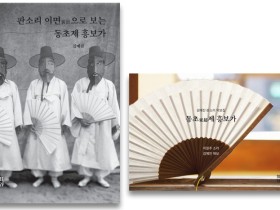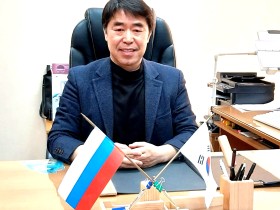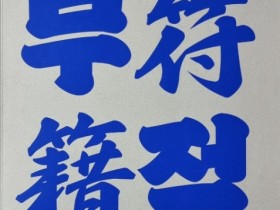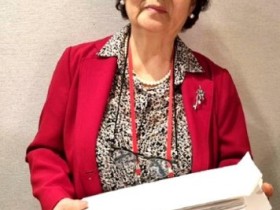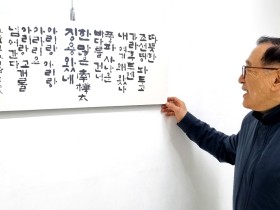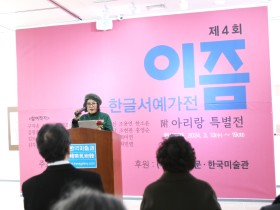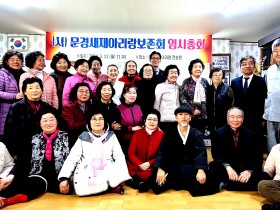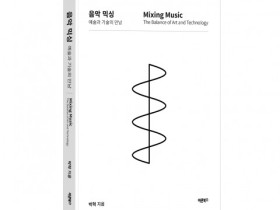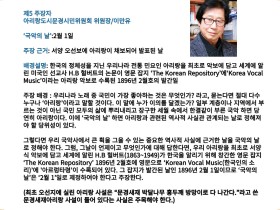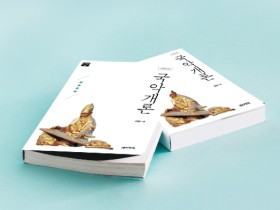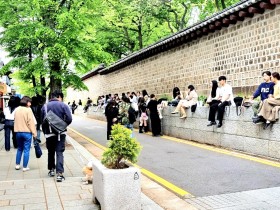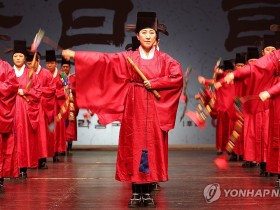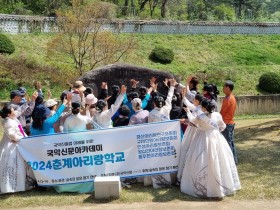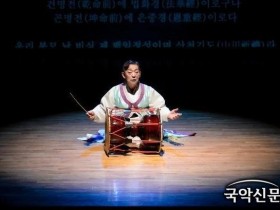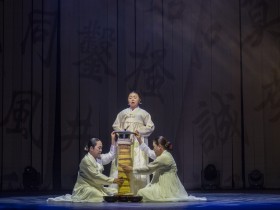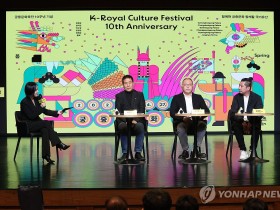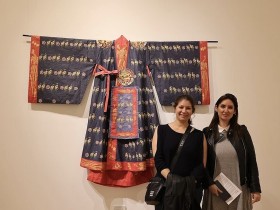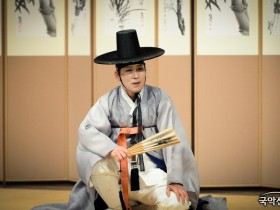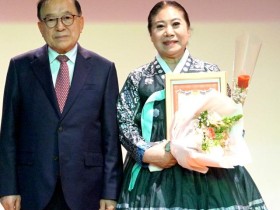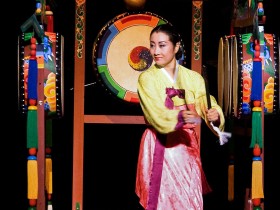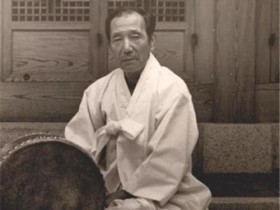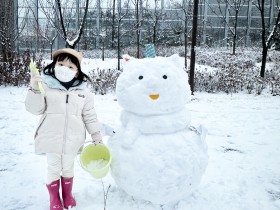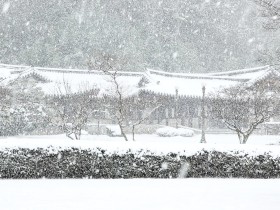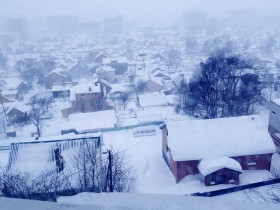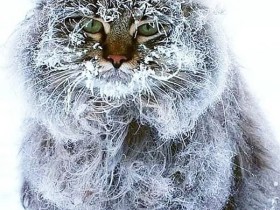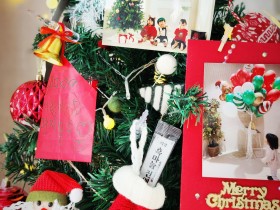검색결과
-
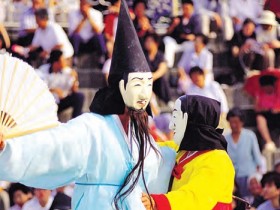 Gangneung Danoje FestivalThe first event of the Danoje Festival is related to the preparation of "divine drinks” (sinju) to be offered to gods and goddesses, thus linking the human world with the divine world. This is followed by a variety of festive events such as the Gwanno Mask Dance (Korea’s unique nonverbal performance by masked players), swing riding, ssireum (Korean wrestling), nongak (traditional Korean music performed by farmers) contests, changpo (iris) hair washing, and surichwi rice cake eating. Of these, the changpo hair washing event is particularly widely practiced by women who believe that the extract of changpo will give them glossier hair and repel the evil spirits that are thought to bear diseases.
Gangneung Danoje FestivalThe first event of the Danoje Festival is related to the preparation of "divine drinks” (sinju) to be offered to gods and goddesses, thus linking the human world with the divine world. This is followed by a variety of festive events such as the Gwanno Mask Dance (Korea’s unique nonverbal performance by masked players), swing riding, ssireum (Korean wrestling), nongak (traditional Korean music performed by farmers) contests, changpo (iris) hair washing, and surichwi rice cake eating. Of these, the changpo hair washing event is particularly widely practiced by women who believe that the extract of changpo will give them glossier hair and repel the evil spirits that are thought to bear diseases. -
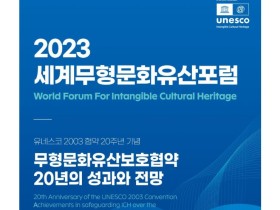 The 2023 World Forum for Intangible Cultural Heritage will be held at the National Intangible Heritage Center in Jeonju,The 2023 World Forum for Intangible Cultural Heritage will be held at the National Intangible Heritage Center in Jeonju, Republic of Korea, over two days on 1 and 2 September in connection with the 2023 ICH Festival. The forumis hosted by the National Intangible Heritage Center (Director-General AHN Hyung Soon) under the Cultural Heritage Administration and organized by the UNESCO ICHCAP (Director-General KIMJisung). The World Forum celebrates its seventh year in 2023 under the theme "20th Anniversary of the 2003 Convention for the Safeguarding of the Intangible Cultural Heritage: Achievements in Safeguarding ICH over the Past Two Decades and Further Prospects.” For thisevent,around thirty academics, UNESCO cultural specialists, facilitators, etc. from seventeencountries around the world will gather at the National Intangible Heritage Center in Jeonju. The forum will also allow Asia-Pacific States Partyto the Convention and various related organizations to participate in the event, shed new light on efforts to safeguard intangible cultural heritage (ICH) by implementing the Convention Over the past twentyyears, and look ahead toward future tasks for the advancement of such efforts.The first day of the event will officially open the forum with keynote presentations by Richard Kurin, Ambassador-at-Large at the Smithsonian Institution, and H.E. Ms. BAK Sangmee, Ambassador of the Permanent Delegation of the Republic of Korea to UNESCO. This will be followed by Session 1 on the theme of "A Retrospective of the Past Twenty Years: Key Themes for Safeguarding ICH Over the Two Decades,” consisting of presentations by Professor Cristina Amescua Ch?vez from the National University of Mexico and four other speakers, with the aim to examine trends in major discourse related to safeguarding ICH. Session 2 will consist of discussions on the role of ICH in contributing to an inclusive and sustainable society, as well as ways to pursue cooperation and development based on themes such as gender equality, media, shared heritage, and civil society, featuring speakers such as Frank Proschan, Research Associate at the Smithsonian Center for Folklife and Cultural Heritage and JorijnNeyrinck, Vice-chair at the Flemish UNESCO Commission in Belgium.In Session 3 onDay 2 addresses the theme of "ICH Initiatives for the Next Steps,” referring to recent major initiatives that are being discussed in relation to safeguarding ICH, particularly revolving around cities, economic contributions, digital technology, and the role of youths. Session 4 is a special session that will focus on the Asia-Pacific region in particular, featuring presentations on ICH safeguarding activities, current status, and future outlook of five countries that each represent an area within the region."The 2023 World Forum” will provide a meaningful time toreflect on past efforts made by the Convention to maintain cultural diversity and explore the outlook of a new leap forward to the next twentyyears to come.The forum will be held at the EolssumaruPerformance Hall at the National Intangible Heritage Center, and livestreamed via the NIHC and UNESCO ICHCAP YouTube channels.Prospective attendees may register in advance at the official forum website (ichworldforum.org) from August 21.For more information on the forum, please inquire with the ICH World Forum team (Tel.: 063-230-9745).
The 2023 World Forum for Intangible Cultural Heritage will be held at the National Intangible Heritage Center in Jeonju,The 2023 World Forum for Intangible Cultural Heritage will be held at the National Intangible Heritage Center in Jeonju, Republic of Korea, over two days on 1 and 2 September in connection with the 2023 ICH Festival. The forumis hosted by the National Intangible Heritage Center (Director-General AHN Hyung Soon) under the Cultural Heritage Administration and organized by the UNESCO ICHCAP (Director-General KIMJisung). The World Forum celebrates its seventh year in 2023 under the theme "20th Anniversary of the 2003 Convention for the Safeguarding of the Intangible Cultural Heritage: Achievements in Safeguarding ICH over the Past Two Decades and Further Prospects.” For thisevent,around thirty academics, UNESCO cultural specialists, facilitators, etc. from seventeencountries around the world will gather at the National Intangible Heritage Center in Jeonju. The forum will also allow Asia-Pacific States Partyto the Convention and various related organizations to participate in the event, shed new light on efforts to safeguard intangible cultural heritage (ICH) by implementing the Convention Over the past twentyyears, and look ahead toward future tasks for the advancement of such efforts.The first day of the event will officially open the forum with keynote presentations by Richard Kurin, Ambassador-at-Large at the Smithsonian Institution, and H.E. Ms. BAK Sangmee, Ambassador of the Permanent Delegation of the Republic of Korea to UNESCO. This will be followed by Session 1 on the theme of "A Retrospective of the Past Twenty Years: Key Themes for Safeguarding ICH Over the Two Decades,” consisting of presentations by Professor Cristina Amescua Ch?vez from the National University of Mexico and four other speakers, with the aim to examine trends in major discourse related to safeguarding ICH. Session 2 will consist of discussions on the role of ICH in contributing to an inclusive and sustainable society, as well as ways to pursue cooperation and development based on themes such as gender equality, media, shared heritage, and civil society, featuring speakers such as Frank Proschan, Research Associate at the Smithsonian Center for Folklife and Cultural Heritage and JorijnNeyrinck, Vice-chair at the Flemish UNESCO Commission in Belgium.In Session 3 onDay 2 addresses the theme of "ICH Initiatives for the Next Steps,” referring to recent major initiatives that are being discussed in relation to safeguarding ICH, particularly revolving around cities, economic contributions, digital technology, and the role of youths. Session 4 is a special session that will focus on the Asia-Pacific region in particular, featuring presentations on ICH safeguarding activities, current status, and future outlook of five countries that each represent an area within the region."The 2023 World Forum” will provide a meaningful time toreflect on past efforts made by the Convention to maintain cultural diversity and explore the outlook of a new leap forward to the next twentyyears to come.The forum will be held at the EolssumaruPerformance Hall at the National Intangible Heritage Center, and livestreamed via the NIHC and UNESCO ICHCAP YouTube channels.Prospective attendees may register in advance at the official forum website (ichworldforum.org) from August 21.For more information on the forum, please inquire with the ICH World Forum team (Tel.: 063-230-9745). -
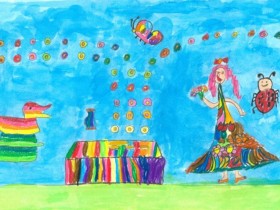 An affiliate of the Cultural Heritage Administration of Korea, will host the special exhibition A Museum Splashed with Color and Shining Maritime Cultural Heritage presenting 108 selected works from the second Children’s Maritime Cultural Heritage Art CThe National Research Institute of Maritime Cultural Heritage (NRIMCH; Director: Kim Seong-bae), an affiliate of the Cultural Heritage Administration of Korea, will host the special exhibition A Museum Splashed with Color and Shining Maritime Cultural Heritage presenting 108 selected works from the second Children’s Maritime Cultural Heritage Art Contest. The exhibition will be held in the Special Exhibition Gallery at the Mokpo Maritime Museum from May 5 (Fri.) through June 6 (Tue.). The NRIMCH began hosting its Children’s Maritime Cultural Heritage Art Contest last year. This year, the contest was held on two days (April 8 and 15) on the theme of "The Maritime Museum That I Painted.” A total of 379 children participated (eighty-one preschoolers, 186 students in grades 1-3, and 112 in grades 4-6).The exhibition will present 108 works from the competition selected for their excellence. One grand prize work, two second place works, three third place works, ten fourth place works, and twenty honorable mention works from each category will be introduced. In addition, "Underwater Treasures Made by Me,” a program involving children’s participation, will be held from May 5 to 14. Thirty children can participate every day on a first-come, first-served basis. Those hoping to participate can pick up the experience package at the information desk on the first floor of the museum. Further details on the exhibition are available on the NRIMCH’s website (www.seamuse.go.kr).Through this exhibition, the NRIMCH hopes that the Mokpo Maritime Museum can become a more familiar and beneficial cultural space to children, who are the protagonists of the future. Moreover, the NRIMCH plans to continue to develop and operate diverse programs that help the public to fully appreciate the significance of history and culture.
An affiliate of the Cultural Heritage Administration of Korea, will host the special exhibition A Museum Splashed with Color and Shining Maritime Cultural Heritage presenting 108 selected works from the second Children’s Maritime Cultural Heritage Art CThe National Research Institute of Maritime Cultural Heritage (NRIMCH; Director: Kim Seong-bae), an affiliate of the Cultural Heritage Administration of Korea, will host the special exhibition A Museum Splashed with Color and Shining Maritime Cultural Heritage presenting 108 selected works from the second Children’s Maritime Cultural Heritage Art Contest. The exhibition will be held in the Special Exhibition Gallery at the Mokpo Maritime Museum from May 5 (Fri.) through June 6 (Tue.). The NRIMCH began hosting its Children’s Maritime Cultural Heritage Art Contest last year. This year, the contest was held on two days (April 8 and 15) on the theme of "The Maritime Museum That I Painted.” A total of 379 children participated (eighty-one preschoolers, 186 students in grades 1-3, and 112 in grades 4-6).The exhibition will present 108 works from the competition selected for their excellence. One grand prize work, two second place works, three third place works, ten fourth place works, and twenty honorable mention works from each category will be introduced. In addition, "Underwater Treasures Made by Me,” a program involving children’s participation, will be held from May 5 to 14. Thirty children can participate every day on a first-come, first-served basis. Those hoping to participate can pick up the experience package at the information desk on the first floor of the museum. Further details on the exhibition are available on the NRIMCH’s website (www.seamuse.go.kr).Through this exhibition, the NRIMCH hopes that the Mokpo Maritime Museum can become a more familiar and beneficial cultural space to children, who are the protagonists of the future. Moreover, the NRIMCH plans to continue to develop and operate diverse programs that help the public to fully appreciate the significance of history and culture. -
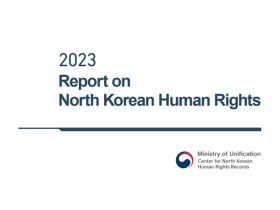 북한인권보고서 영문판 공개…“국제연대·협력 기대”통일부가 북한의 전반적인 인권상황을 해외에도 알릴 수 있도록 ‘2023 북한인권보고서’ 영문판을 26일 공개했다. 통일부는 앞서 지난달 30일 정부의 첫 ‘북한인권보고서’를 발간한 바 있다. 이번 영문판은 통일부 누리집에 PDF 형태로 먼저 공개됐다. 책자는 추후 재외공관, 국제기구, NGO, 국내외 연구소 등에 배포될 예정이다. 영문판에는 보고서에 대한 이해를 돕기 위해 해외에서 익숙하지 않은 북한 특유의 용어를 따로 모은 북한용어집이 추가됐다. 특히 독자의 편의를 위해 북한인권 상황을 요약한 Ⅱ장을 별도로 발췌한 요약본도 함께 제공됐다. 통일부는 "북한인권보고서 영문판을 통해 해외에서도 북한 주민의 인권에 대한 관심이 높아져 북한인권 문제에 대해 논의할 수 있는 국제적인 연대와 협력의 기회가 많아지길 기대한다”고 밝혔다. 이어 "북한인권보고서가 북한인권 분야의 공신력 있는 기초자료로 해외에서도 널리 활용될 수 있기를 바란다”고 덧붙였다. 문의는 통일부 북한인권기록센터 조사과(02-2135-7113)
북한인권보고서 영문판 공개…“국제연대·협력 기대”통일부가 북한의 전반적인 인권상황을 해외에도 알릴 수 있도록 ‘2023 북한인권보고서’ 영문판을 26일 공개했다. 통일부는 앞서 지난달 30일 정부의 첫 ‘북한인권보고서’를 발간한 바 있다. 이번 영문판은 통일부 누리집에 PDF 형태로 먼저 공개됐다. 책자는 추후 재외공관, 국제기구, NGO, 국내외 연구소 등에 배포될 예정이다. 영문판에는 보고서에 대한 이해를 돕기 위해 해외에서 익숙하지 않은 북한 특유의 용어를 따로 모은 북한용어집이 추가됐다. 특히 독자의 편의를 위해 북한인권 상황을 요약한 Ⅱ장을 별도로 발췌한 요약본도 함께 제공됐다. 통일부는 "북한인권보고서 영문판을 통해 해외에서도 북한 주민의 인권에 대한 관심이 높아져 북한인권 문제에 대해 논의할 수 있는 국제적인 연대와 협력의 기회가 많아지길 기대한다”고 밝혔다. 이어 "북한인권보고서가 북한인권 분야의 공신력 있는 기초자료로 해외에서도 널리 활용될 수 있기를 바란다”고 덧붙였다. 문의는 통일부 북한인권기록센터 조사과(02-2135-7113) -
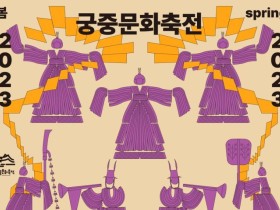 The Royal Palaces and Tombs Center(Head Jeong Seong-Jo) at the Cultural Heritage AdministrationThe Royal Palaces and Tombs Center(Head Jeong Seong-Jo) at the Cultural Heritage Administration (CHA) and the Korea Cultural Heritage Foundation (President Choi Young-chang) will host the 2023 Spring K-Royal Culture Festival for nine days from April 29 (Sat) to May 7 (Sun) at five palaces in Seoul (Gyeongbokgung, Changdeokgung, Deoksugung, Changgyeonggung, and Gyeonghuigung Palaces), Jongmyo, and Sajikdan. The K-Royal Culture Festival is the largest cultural heritage festival in Korea, which has presented a variety of traditional culture contents across beautiful palaces. Last year, the festival attracted 1.36 million visitors in spring and fall combined. This year, the festival is expected to attract even more visitors as people can now enjoy the palaces this beautiful spring with things returning to normal after the COVID-19 pandemic. The K-Royal Culture Festival will kick off with a fabulous opening ceremony at Gyeongbokgung Palace on April 28. The K-Royal Culture Festival will kick off with a wonderful opening festival on April 28 (Fri) at Heungnyemun Square in Gyeongbokgung Palace. On the day of the opening ceremony, the Commemorative Parade for the 40th Anniversary of ChanggyeonggungPalace’s Returned Name will be held for 40 minutes from 2:00 pm around Changgyeonggung Palace. The opening ceremony is scheduled to begin at 7:30 pm at Heungnyemun Square in Gyeongbokgung Palace. The opening performance will feature a modern interpretation of traditional dances, such as the fan dance and cheoyongmu dance. It will be followed by a performance by a national children’s choir, and a thematic performance by the cast of Palace Musical: Sejong 1446, one of the programs on offer during the festival. The festival’s opening ceremony will conclude with a performance by La Poem, a male crossover vocal group. Time Travel: King Yeongjo, Opening Honghwamun Gate to mark the 40th anniversary of Changgyeonggung Palace’s returned name. The signature program of the K-Royal Culture Festival is Time Travel: King Yeongjo, Opening Honghwamun Gate, which will be hosted at Changgyeonggung Palace. The program is planned to celebrate the 40th anniversary of Changgyeonggung Palace’s returned name as an audience interactive program where participants can take part in a reenactment of King Yeongjo’s 50th birthday. Participants selected from pre-event applications will be allowed to participate in the reenactment and experience each step during the preparation process of the royal festival. The event will be held for five days (May 2 to 6). On May 2, a historical reenactment about the story of King Yeongjo’s 50th Birthday Ceremony, where the audience can move around, will be performed. It will be held for 80 minutes twice per day, and those who book the reenactment earlier will be able to watch the reenactment via the receiver as they move around Changgyeonggung Palace. The reenactment will also be live-streamed on Official Instagram of K-Royal Culture Festival. From May 3 to 5, New Court Members (180 participants per day) selected from pre-event applications in the program will participate in food, painting, and dance experiences to prepare for King Yeongjo’s 50th Birthday Ceremony. After the experiences, they will learn pogurak, a court dance, watch traditional performances.For the experience of Court Food, the program will prepare goimsang (meal for a special occasion) for King Yeongjo’s 50th Birthday Ceremony at the old site of Sookseolso (temporary kitchen), which is located near the well on the right side of Myeongjeongjeon Hall in Changgyeonggung Palace.For the experience of Court Painting, the program will reenact court festival paintings by historical court painting experts and allow visitors to draw palace paintings at Gyeongchunjeon Hall in Changgyeonggung Palace.For the experience of Court Dance, visitors can watch court performances, including hyangbal (traditional percussion instrument), near Tongmyeongjeon Hall in Changgyeonggung Palace, and learn how to perform pogurak. Around Haminjeong Pavilion in Changgyeonggung Palace, visitors will watch gugak (traditional Korean music) performances, including pansori, talchum, and sorikkun, by Civilian Singers invited to the palace under the theme of Jangakwon Inviting Singers. The fifth day of the program will feature the reenactment of the King’s 50th birthday event and post-meal performances. The reenactment of the birthday event will be held twice per day for 60 minutes. After the reenactment, visitors can watch performances by the selected Civilian Singers and other celebratory performances at Chundangji Pond. Furthermore, Yeongchunheon Hall in Changgyeonggung Palace will provide a permanent court clothing experience program where visitors can try on the clothing of various augmented reality (AR) court characters, who work in a palace.Many things to see in Gyeongbokgung, Changdeokgung, and Deoksugung Palaces In Gyeongbokgung Palace, Palace Musical: Sejong 1446, a four-day performance, will be held from April 29 to May 2 (paid event with advance booking required). From May 5 to May 7, the program Children’s K-Royal Culture Festival, which consists of a variety of experiences such as Children’s Gwageo Exam (traditional civil service exam) and Palace True or False Quiz, will be held for visiting families to celebrate Children’s Day. Around Sujeongjeon Hall in Gyeongbokgung Palace, performers across different fields, including new gugak artists, crossover bands, and classical musicians, will showcase a performance called Court Music Entertainmentfrom May 3 to May 7. In particular, on May 7th, a special performance featuring cellist Yang Sung-won will be held in connection with the night tour of Gyeongbokgung Palace. In Changdeokgung Palace, Romantic Palace Gidam Theater, a travelling theater play based on novels stored in Nakseonjae Hall, will be performed for four days from April 30 to May 3 (paid event with advance booking required). In Deoksugung Palace, there will be a performance called Artists’ Loved Palace, featuring famous artists, at 7:30 pm for three days from May 5 to May 7. Free performances to be held near Junghwajeon Hall in Deoksugung Palace will feature Yang Bang-ean’s Band on the first day, crossover band 2nd Moon and Kim Jun-su, Ha Yun-juand Kim Moo-bin on the second day, composer and pianist Yiruma on the third day. Advance booking program for K-Royal Culture Festival The advance booking program prior to the festival will be available from1pm on April 19on the Ticketlink website (www.ticketlink.co.kr). ▲ Palace Musical: Sejong 1446 and Romantic Palace Gidam Theater are paid programs with 700 and 50 seats available per session, respectively. ▲ The Opening Ceremony of K-Royal Culture Festival (April 28), Children’s K-Royal Culture Festival Gwageo Liberal Arts Exam (May 5 to 6), day 1 of Time Travel: King Yeongjo, Opening Honghwamun Gate (May 2), Plum Flower Blooming Miles (May 4 to 6), a program planned by the Dae Han Imperial House, and Court Culture Campaign-Refreshment Experience of Yakbang(The traditional pharmacy) in Changdeokgung(April 29 to May 7), a program presented in partnership with LG Household & Health Care, are available for free with advance booking required. Furthermore, the special ticket Palace Pass, which allows unlimited visits to the five palaces during the festival, will be available for 10,000 won. The number of tickets will be limited to 1,000. During the festival, Palace Parade Performance, which features pangut (Korean folk music), will be showcased in the five palaces. It will take place on April 28 (Fri) in Changgyeonggung Palace, April 29 (Sat) in Gyeongbokgung Palace, April 30 (Sun) in Changdeokgung Palace, May 5 (Fri) in Gyeonghuigung Palace, and May 6 (Sat) in Deoksugung Palace. And Oprating hours are different for each palace.For more information and the schedule of the 2023 Spring K-Royal Culture Festival, check out the website of the Royal Palaces and Tombs Center in the Cultural Heritage Administration (royal.cha.go.kr), the website of the Korea Cultural Heritage Foundation (www.chf.or.kr), the website of K-Royal Culture Festival (chf.or.kr/fest), and the official Instagram account of K-Royal Culture Festival (@royalculturefestival_official), or call the Royal Palaces and Tombs Center Program Call Center at ☎1522-2295.
The Royal Palaces and Tombs Center(Head Jeong Seong-Jo) at the Cultural Heritage AdministrationThe Royal Palaces and Tombs Center(Head Jeong Seong-Jo) at the Cultural Heritage Administration (CHA) and the Korea Cultural Heritage Foundation (President Choi Young-chang) will host the 2023 Spring K-Royal Culture Festival for nine days from April 29 (Sat) to May 7 (Sun) at five palaces in Seoul (Gyeongbokgung, Changdeokgung, Deoksugung, Changgyeonggung, and Gyeonghuigung Palaces), Jongmyo, and Sajikdan. The K-Royal Culture Festival is the largest cultural heritage festival in Korea, which has presented a variety of traditional culture contents across beautiful palaces. Last year, the festival attracted 1.36 million visitors in spring and fall combined. This year, the festival is expected to attract even more visitors as people can now enjoy the palaces this beautiful spring with things returning to normal after the COVID-19 pandemic. The K-Royal Culture Festival will kick off with a fabulous opening ceremony at Gyeongbokgung Palace on April 28. The K-Royal Culture Festival will kick off with a wonderful opening festival on April 28 (Fri) at Heungnyemun Square in Gyeongbokgung Palace. On the day of the opening ceremony, the Commemorative Parade for the 40th Anniversary of ChanggyeonggungPalace’s Returned Name will be held for 40 minutes from 2:00 pm around Changgyeonggung Palace. The opening ceremony is scheduled to begin at 7:30 pm at Heungnyemun Square in Gyeongbokgung Palace. The opening performance will feature a modern interpretation of traditional dances, such as the fan dance and cheoyongmu dance. It will be followed by a performance by a national children’s choir, and a thematic performance by the cast of Palace Musical: Sejong 1446, one of the programs on offer during the festival. The festival’s opening ceremony will conclude with a performance by La Poem, a male crossover vocal group. Time Travel: King Yeongjo, Opening Honghwamun Gate to mark the 40th anniversary of Changgyeonggung Palace’s returned name. The signature program of the K-Royal Culture Festival is Time Travel: King Yeongjo, Opening Honghwamun Gate, which will be hosted at Changgyeonggung Palace. The program is planned to celebrate the 40th anniversary of Changgyeonggung Palace’s returned name as an audience interactive program where participants can take part in a reenactment of King Yeongjo’s 50th birthday. Participants selected from pre-event applications will be allowed to participate in the reenactment and experience each step during the preparation process of the royal festival. The event will be held for five days (May 2 to 6). On May 2, a historical reenactment about the story of King Yeongjo’s 50th Birthday Ceremony, where the audience can move around, will be performed. It will be held for 80 minutes twice per day, and those who book the reenactment earlier will be able to watch the reenactment via the receiver as they move around Changgyeonggung Palace. The reenactment will also be live-streamed on Official Instagram of K-Royal Culture Festival. From May 3 to 5, New Court Members (180 participants per day) selected from pre-event applications in the program will participate in food, painting, and dance experiences to prepare for King Yeongjo’s 50th Birthday Ceremony. After the experiences, they will learn pogurak, a court dance, watch traditional performances.For the experience of Court Food, the program will prepare goimsang (meal for a special occasion) for King Yeongjo’s 50th Birthday Ceremony at the old site of Sookseolso (temporary kitchen), which is located near the well on the right side of Myeongjeongjeon Hall in Changgyeonggung Palace.For the experience of Court Painting, the program will reenact court festival paintings by historical court painting experts and allow visitors to draw palace paintings at Gyeongchunjeon Hall in Changgyeonggung Palace.For the experience of Court Dance, visitors can watch court performances, including hyangbal (traditional percussion instrument), near Tongmyeongjeon Hall in Changgyeonggung Palace, and learn how to perform pogurak. Around Haminjeong Pavilion in Changgyeonggung Palace, visitors will watch gugak (traditional Korean music) performances, including pansori, talchum, and sorikkun, by Civilian Singers invited to the palace under the theme of Jangakwon Inviting Singers. The fifth day of the program will feature the reenactment of the King’s 50th birthday event and post-meal performances. The reenactment of the birthday event will be held twice per day for 60 minutes. After the reenactment, visitors can watch performances by the selected Civilian Singers and other celebratory performances at Chundangji Pond. Furthermore, Yeongchunheon Hall in Changgyeonggung Palace will provide a permanent court clothing experience program where visitors can try on the clothing of various augmented reality (AR) court characters, who work in a palace.Many things to see in Gyeongbokgung, Changdeokgung, and Deoksugung Palaces In Gyeongbokgung Palace, Palace Musical: Sejong 1446, a four-day performance, will be held from April 29 to May 2 (paid event with advance booking required). From May 5 to May 7, the program Children’s K-Royal Culture Festival, which consists of a variety of experiences such as Children’s Gwageo Exam (traditional civil service exam) and Palace True or False Quiz, will be held for visiting families to celebrate Children’s Day. Around Sujeongjeon Hall in Gyeongbokgung Palace, performers across different fields, including new gugak artists, crossover bands, and classical musicians, will showcase a performance called Court Music Entertainmentfrom May 3 to May 7. In particular, on May 7th, a special performance featuring cellist Yang Sung-won will be held in connection with the night tour of Gyeongbokgung Palace. In Changdeokgung Palace, Romantic Palace Gidam Theater, a travelling theater play based on novels stored in Nakseonjae Hall, will be performed for four days from April 30 to May 3 (paid event with advance booking required). In Deoksugung Palace, there will be a performance called Artists’ Loved Palace, featuring famous artists, at 7:30 pm for three days from May 5 to May 7. Free performances to be held near Junghwajeon Hall in Deoksugung Palace will feature Yang Bang-ean’s Band on the first day, crossover band 2nd Moon and Kim Jun-su, Ha Yun-juand Kim Moo-bin on the second day, composer and pianist Yiruma on the third day. Advance booking program for K-Royal Culture Festival The advance booking program prior to the festival will be available from1pm on April 19on the Ticketlink website (www.ticketlink.co.kr). ▲ Palace Musical: Sejong 1446 and Romantic Palace Gidam Theater are paid programs with 700 and 50 seats available per session, respectively. ▲ The Opening Ceremony of K-Royal Culture Festival (April 28), Children’s K-Royal Culture Festival Gwageo Liberal Arts Exam (May 5 to 6), day 1 of Time Travel: King Yeongjo, Opening Honghwamun Gate (May 2), Plum Flower Blooming Miles (May 4 to 6), a program planned by the Dae Han Imperial House, and Court Culture Campaign-Refreshment Experience of Yakbang(The traditional pharmacy) in Changdeokgung(April 29 to May 7), a program presented in partnership with LG Household & Health Care, are available for free with advance booking required. Furthermore, the special ticket Palace Pass, which allows unlimited visits to the five palaces during the festival, will be available for 10,000 won. The number of tickets will be limited to 1,000. During the festival, Palace Parade Performance, which features pangut (Korean folk music), will be showcased in the five palaces. It will take place on April 28 (Fri) in Changgyeonggung Palace, April 29 (Sat) in Gyeongbokgung Palace, April 30 (Sun) in Changdeokgung Palace, May 5 (Fri) in Gyeonghuigung Palace, and May 6 (Sat) in Deoksugung Palace. And Oprating hours are different for each palace.For more information and the schedule of the 2023 Spring K-Royal Culture Festival, check out the website of the Royal Palaces and Tombs Center in the Cultural Heritage Administration (royal.cha.go.kr), the website of the Korea Cultural Heritage Foundation (www.chf.or.kr), the website of K-Royal Culture Festival (chf.or.kr/fest), and the official Instagram account of K-Royal Culture Festival (@royalculturefestival_official), or call the Royal Palaces and Tombs Center Program Call Center at ☎1522-2295. -
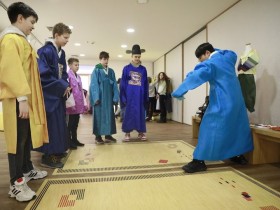 헝가리 주 한국문화원, 19일 한국 전통 장난감 만들기
헝가리 주 한국문화원, 19일 한국 전통 장난감 만들기 -
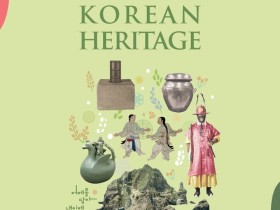 The Cultural Heritage Administration (CHA) will release the Spring 2023 issue of KOREAN HERITAGE, an English-language publicationThe Cultural Heritage Administration (CHA) will release the Spring 2023 issue of KOREAN HERITAGE, an English-language publication, in the last week of March to promote the value and diversity of Korea's heritage abroad (35,000 copies, 56 pages). KOREAN HERITAGE, having started with Summer 2008 issue, celebrates its 15th anniversary this year. It has been covering cultural, natural, and intangible heritage, conveying the diverse values of our heritage in a simple yet in-depth manner to both Koreans and foreigners. It has been delivered to diplomatic missions in Korea and abroad, visitors to overseas cultural centers, overseas Hangeul schools, and overseas universities. It has helped foreigners from various walks of life, including academics, and the general public, to have a deeper appreciation of Korean cultural heritage. In particular, this year, non-Korean experts with extensive knowledge and experience in various field such as political, economic, social, and cultural history of Korea participated in contributions and consultations from the planning stage to make various changes in both design and content, and CHA plans to newly introduce articles that shed light on the traditional culture, which is the root of modern culture. By expanding the distribution to international schools and foreign language schools in Korea from this spring issue, CHA anticipates that the international students will become more knowledgeable in the cultural heritage of Korea in the future, while Korean students will be able to contribute to promoting the significance and value of Korean cultural heritage at home and abroad. KOREAN HERITAGE will be shared in e-book and pdf file format on its website (www.koreanheritage.kr), recognizing that we are responsible for promoting our heritage overseas. The Cultural Heritage Administration will continue to do its best to promote our heritage overseas.
The Cultural Heritage Administration (CHA) will release the Spring 2023 issue of KOREAN HERITAGE, an English-language publicationThe Cultural Heritage Administration (CHA) will release the Spring 2023 issue of KOREAN HERITAGE, an English-language publication, in the last week of March to promote the value and diversity of Korea's heritage abroad (35,000 copies, 56 pages). KOREAN HERITAGE, having started with Summer 2008 issue, celebrates its 15th anniversary this year. It has been covering cultural, natural, and intangible heritage, conveying the diverse values of our heritage in a simple yet in-depth manner to both Koreans and foreigners. It has been delivered to diplomatic missions in Korea and abroad, visitors to overseas cultural centers, overseas Hangeul schools, and overseas universities. It has helped foreigners from various walks of life, including academics, and the general public, to have a deeper appreciation of Korean cultural heritage. In particular, this year, non-Korean experts with extensive knowledge and experience in various field such as political, economic, social, and cultural history of Korea participated in contributions and consultations from the planning stage to make various changes in both design and content, and CHA plans to newly introduce articles that shed light on the traditional culture, which is the root of modern culture. By expanding the distribution to international schools and foreign language schools in Korea from this spring issue, CHA anticipates that the international students will become more knowledgeable in the cultural heritage of Korea in the future, while Korean students will be able to contribute to promoting the significance and value of Korean cultural heritage at home and abroad. KOREAN HERITAGE will be shared in e-book and pdf file format on its website (www.koreanheritage.kr), recognizing that we are responsible for promoting our heritage overseas. The Cultural Heritage Administration will continue to do its best to promote our heritage overseas. -
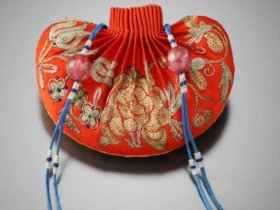 The National Palace Museum of Korea, an affiliate of the Cultural Heritage Administration of Korea, has selectedThe National Palace Museum of Korea, an affiliate of the Cultural Heritage Administration of Korea, has selected "Sachet Pouch with Designs of Peonies and Buddha’s Hand Citrus” as its "Curator’s Choice from the Royal Treasures” for the month of February. Starting February 1, the pouch will be on display in the Royal Court Life Gallery on the second floor of the museum. The pouch, which is presumed to have belonged to Imperial Prince Yeong (1897?1970; also known as King Yeongchin), is characterized by a round form. It still contains aromatic materials wrapped in traditional Korean mulberry pulp paper (hanji). The pouch was part of a group of 333 items of clothing and accessories once belonging to the family of Imperial Prince Yeong that were returned from Japan to Korea in 1991. Under the title "Clothes and Accessories Worn by King Yeongchin and His Family,” they were designated by the South Korean government as National Folklore Cultural Heritage and are currently housed in the National Palace Museum of Korea. Imperial Prince Yeong (1897 - 1970; birth name: Yi Eun) was the seventh son of King Gojong. He was the last imperial prince of the Korean Empire. Clothes and Accessories Worn by King Yeongchin and his family is a collection of 333 pieces of clothing and accessories once belonging to the family of Imperial Prince Yeong. They were originally held by the consort of the imperial prince, but were later sent to the National Museum of Tokyo for management. In 1991, the items were returned to Korea in accordance with an agreement signed between South Korea and Japan regarding the transfer of clothing originating with the family of Imperial Prince Yeong. Demonstrating the sophisticated crafting applied to court sachet pouches, this cultural heritage item is made of unpatterned red silk gauze on one side and unpatterned yellow silk gauze on the other. Both sides are embroidered with large designs of peonies combined with smaller designs of Buddha’s hand citrus and small flowers. The opening of the pouch features fifteen pleats threaded with a flat braided string dyed navy blue and finished at either end with a glass bead. The designs of peonies and Buddha’s hand citrus were elaborately embroidered using couching stitches. They respectively symbolize wealth and honor and longevity, and also express wishes for the prosperity of the imperial court. In addition to being displayed in the museum gallery, this month’s Curator’s Choice ? Sachet Pouch with Designs of Peonies and Buddha’s Hand Citrus ? will be presented virtually through a video on the YouTube channels of the museum and the Cultural Heritage Administration of Korea.
The National Palace Museum of Korea, an affiliate of the Cultural Heritage Administration of Korea, has selectedThe National Palace Museum of Korea, an affiliate of the Cultural Heritage Administration of Korea, has selected "Sachet Pouch with Designs of Peonies and Buddha’s Hand Citrus” as its "Curator’s Choice from the Royal Treasures” for the month of February. Starting February 1, the pouch will be on display in the Royal Court Life Gallery on the second floor of the museum. The pouch, which is presumed to have belonged to Imperial Prince Yeong (1897?1970; also known as King Yeongchin), is characterized by a round form. It still contains aromatic materials wrapped in traditional Korean mulberry pulp paper (hanji). The pouch was part of a group of 333 items of clothing and accessories once belonging to the family of Imperial Prince Yeong that were returned from Japan to Korea in 1991. Under the title "Clothes and Accessories Worn by King Yeongchin and His Family,” they were designated by the South Korean government as National Folklore Cultural Heritage and are currently housed in the National Palace Museum of Korea. Imperial Prince Yeong (1897 - 1970; birth name: Yi Eun) was the seventh son of King Gojong. He was the last imperial prince of the Korean Empire. Clothes and Accessories Worn by King Yeongchin and his family is a collection of 333 pieces of clothing and accessories once belonging to the family of Imperial Prince Yeong. They were originally held by the consort of the imperial prince, but were later sent to the National Museum of Tokyo for management. In 1991, the items were returned to Korea in accordance with an agreement signed between South Korea and Japan regarding the transfer of clothing originating with the family of Imperial Prince Yeong. Demonstrating the sophisticated crafting applied to court sachet pouches, this cultural heritage item is made of unpatterned red silk gauze on one side and unpatterned yellow silk gauze on the other. Both sides are embroidered with large designs of peonies combined with smaller designs of Buddha’s hand citrus and small flowers. The opening of the pouch features fifteen pleats threaded with a flat braided string dyed navy blue and finished at either end with a glass bead. The designs of peonies and Buddha’s hand citrus were elaborately embroidered using couching stitches. They respectively symbolize wealth and honor and longevity, and also express wishes for the prosperity of the imperial court. In addition to being displayed in the museum gallery, this month’s Curator’s Choice ? Sachet Pouch with Designs of Peonies and Buddha’s Hand Citrus ? will be presented virtually through a video on the YouTube channels of the museum and the Cultural Heritage Administration of Korea. -
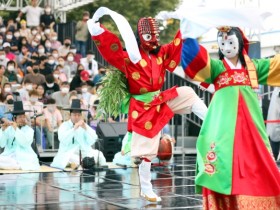 “Talchum, mask dance drama in the Republic of Korea” has at last made it into the Representative List of the Intangible Cultural Heritage of Humanity.The decision was made in the morning of November 30, 2022 local time at the 17th Session of the Inter-Governmental Committee under way in Rabat, the Kingdom of Morocco from November 28 to December 3, 2022.The UNESCO Intangible Cultural Heritage (ICH) Committee stated that the message of Talchum of universal equality value and criticism of social hierarchy is still relevant today and praised its role as a symbol of respective cultural identities its variant forms represent. Nomination file of Talchum praised for its well-elaborated the social functions and cultural meaningsThe inscription is the result of the joint efforts from the early stages of preparation among the Cultural Heritage Administration, Ministry of Foreign Affairs, the City of Andong, Gyungbuk Province, 18 safeguarding associations and the World Federation of Mask Culture whose membership includes heritage transmitters of those listed on either the national list or provincial lists of ICH. The successful nomination of Talchum will serve as an excellent precedent of close cooperation between the private and public sectors in publicizing Korea’s traditional culture to the rest of the world. Following inscription, the number of Korea’s elements on the UNESCO’s ICH inventory grows to 22. The Korean government states it will make continuous efforts to promote cultural diversity and creativity of humanity in the spirit of the UNESCO Convention of Safeguarding ICH.
“Talchum, mask dance drama in the Republic of Korea” has at last made it into the Representative List of the Intangible Cultural Heritage of Humanity.The decision was made in the morning of November 30, 2022 local time at the 17th Session of the Inter-Governmental Committee under way in Rabat, the Kingdom of Morocco from November 28 to December 3, 2022.The UNESCO Intangible Cultural Heritage (ICH) Committee stated that the message of Talchum of universal equality value and criticism of social hierarchy is still relevant today and praised its role as a symbol of respective cultural identities its variant forms represent. Nomination file of Talchum praised for its well-elaborated the social functions and cultural meaningsThe inscription is the result of the joint efforts from the early stages of preparation among the Cultural Heritage Administration, Ministry of Foreign Affairs, the City of Andong, Gyungbuk Province, 18 safeguarding associations and the World Federation of Mask Culture whose membership includes heritage transmitters of those listed on either the national list or provincial lists of ICH. The successful nomination of Talchum will serve as an excellent precedent of close cooperation between the private and public sectors in publicizing Korea’s traditional culture to the rest of the world. Following inscription, the number of Korea’s elements on the UNESCO’s ICH inventory grows to 22. The Korean government states it will make continuous efforts to promote cultural diversity and creativity of humanity in the spirit of the UNESCO Convention of Safeguarding ICH. -
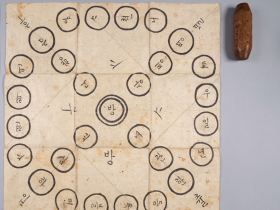 ‘Yutnori’ to Be Designated as National Intangible Cultural Heritage
‘Yutnori’ to Be Designated as National Intangible Cultural Heritage -
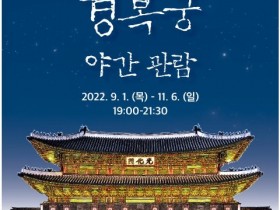 The Gyeongbokgung Palace Management Office of the Gyeongbokgung Palace Management Office announced that Gyeongbokgung Palace will be opened at nightThe Gyeongbokgung Palace Management Office (Chief Choi Jae-hyeok) of the Gyeongbokgung Palace Management Office announced that Gyeongbokgung Palace will be opened at night (7:00 PM ? 9:30 PM) from September 1 through November 6 (for 52 days). The last visitor should arrive at the ticket office by 8:30 PM).The annual night opening of Gyeongbokgung Palace is so popular that admission tickets are sold out before you know it. The annual night opening is available during the spring and autumn season, and during this second half of the year, visitors are welcome to enjoy the crisp atmosphere of autumn night at the palace.To pay a night visit to Gyeongbokgung Palace during the event period, you have to make a reservation in advance through the website (https://ticket.11st.co.kr/) or buy onsite ticket at the entrance on the very day. Non-Koreansmay purchase an admission ticket at the manned ticket office at Gwanghwamun on the day of visit. You can make a reservation from 10:00 AM on Monday, August 25 for the first period (Sep. 1 ? 30) or from 10:00 AM on Friday, September 23 for the second period (Oct. 1 ? Nov. 6). Reservation can be made at least one day before the day of visitif there is a remaining ticket. You may get a refund for a reserved ticket when you cancel by 5:00 PM on the day before the date of the scheduled visitThose exempted from paying the admission fee: persons of national merit and their spouses; a person with severe disability and a person accompanying him/her; a person with minor disability; a holder of a certificate as a bereaved family member of persons of national merit; children under the age of 6; seniors aged 65 years or older; a hanbok wearer. Those stated here can enter the palace at Heungyemun Gate by simply presenting their ID without reservation or ticket.Those accompanying a child below 6 years must make a reservation or buy onsite tickets.We sincerely hope that visitors have a pleasant night at Gyeongbokgung Palace, which is one of the country’s leading cultural heritage. For more details about the event, please visit the homepage of the Gyeongbokgung Palace Management Office. We at the Gyeongbokgung Palace Management Office of the CHA will continue striving to provide more opportunities for people to have a good time at olden-day palaces.
The Gyeongbokgung Palace Management Office of the Gyeongbokgung Palace Management Office announced that Gyeongbokgung Palace will be opened at nightThe Gyeongbokgung Palace Management Office (Chief Choi Jae-hyeok) of the Gyeongbokgung Palace Management Office announced that Gyeongbokgung Palace will be opened at night (7:00 PM ? 9:30 PM) from September 1 through November 6 (for 52 days). The last visitor should arrive at the ticket office by 8:30 PM).The annual night opening of Gyeongbokgung Palace is so popular that admission tickets are sold out before you know it. The annual night opening is available during the spring and autumn season, and during this second half of the year, visitors are welcome to enjoy the crisp atmosphere of autumn night at the palace.To pay a night visit to Gyeongbokgung Palace during the event period, you have to make a reservation in advance through the website (https://ticket.11st.co.kr/) or buy onsite ticket at the entrance on the very day. Non-Koreansmay purchase an admission ticket at the manned ticket office at Gwanghwamun on the day of visit. You can make a reservation from 10:00 AM on Monday, August 25 for the first period (Sep. 1 ? 30) or from 10:00 AM on Friday, September 23 for the second period (Oct. 1 ? Nov. 6). Reservation can be made at least one day before the day of visitif there is a remaining ticket. You may get a refund for a reserved ticket when you cancel by 5:00 PM on the day before the date of the scheduled visitThose exempted from paying the admission fee: persons of national merit and their spouses; a person with severe disability and a person accompanying him/her; a person with minor disability; a holder of a certificate as a bereaved family member of persons of national merit; children under the age of 6; seniors aged 65 years or older; a hanbok wearer. Those stated here can enter the palace at Heungyemun Gate by simply presenting their ID without reservation or ticket.Those accompanying a child below 6 years must make a reservation or buy onsite tickets.We sincerely hope that visitors have a pleasant night at Gyeongbokgung Palace, which is one of the country’s leading cultural heritage. For more details about the event, please visit the homepage of the Gyeongbokgung Palace Management Office. We at the Gyeongbokgung Palace Management Office of the CHA will continue striving to provide more opportunities for people to have a good time at olden-day palaces. -
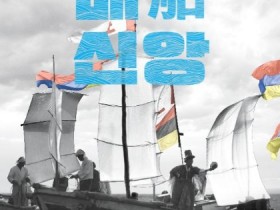 The National Research Institute of Maritime Cultural Heritage presents its special exhibitionThe National Research Institute of Maritime Cultural Heritage (Lee Kyu Hoon, Director's representative) presents its special exhibition of 2022 entitled 'Sea, Ship, Beliefs' at the Mokpo Maritime Museum from July 29 to November 20 to mark the 3rd Island Day. Korea is a peninsula surrounded by water on three sides; hence, various maritime beliefs have been passing down along coastal regions. This exhibition reveals the stories of the people who adapt themselves to sea and make lives with the sea. Traditional religious beliefs and practices protect fishermen’s lives in an ever-changing sea, where abundance and disaster coexist. The National Research Institute of Maritime Cultural Heritage hopes this exhibition enables visitors to explore the lives of the fishermen who sublimated the desire for an abundant catch of fish and safety at sea into community festivals. The first theme is 'Ships, Crossing over the Sea of Life and Fear'. Ships are vital to people who depend on seas, rivers or lakes for their way of life and their live -lihoods. While the art of boat building and sailing skills have continuously advanced, dangers faced by the fishermen are unavoidable. Varieties of boat rituals and worship of the boat guardian deities are therefore performed by fishing communities in Korea. The second theme is 'Sea God, Worshiped as a Guardian Deity of Nation and the People'. Since ancient time, people believed that deities who rule earth, sea, and sky. Celestial god and water god, in particular, are worshiped not only for well-being of individual and community, but also for peace in the royal family, national defense, and navigational safety. Sea god rituals were held not only by the state, but also by local officials and civilians to express gratitude for the favors of spiritual beings. The third theme is 'Fishermen, Praying for Safety and a Big Catch'. Wishing for an abundant catch and safe navigation, fishermen worshiped deities. Maritime rituals refer to a number of rites held in the coastal regions, such as sea, island, docks and seaside. Dangje of the west coast, pungeoje and byeolsije of the eastern and southern coasts are typical communal rites. Pungeoje(ritual for big catch) was a ceremonial process to summon aid from various sea gods, aiming at encouraging a bounteous catch and ensuring a safe return to harbours. The fourth theme is 'Boats, Guiding Souls from Sea to Heaven'. In Korean Shamanism, a death ritual is held to app-ease both the living and the dead. In shamanic rites, the boat as a symbol was treated as a vehicle to transport individuals to the Otherworld with confidence and comfort. During shamanic death ceremonies, shamans either went directly to the sea by boat or floated a miniature of straw ship on the beach, and prayed for the spirit of the dead to leave this world and safely move to heaven. The National Research Institute of Maritime Cultural Heritage hopes that the exhibition entitled "Sea, Ship and Belief” will deepen visitors’ understanding of the way of life of fishermen in the past. The rituals preserved in fishing villages across Korea were developed by fishing communities over a long period of time as an integral part of their way of life, in which abundance coexisted with fear. The traditional sea belief believed that individuals and their entire community, and humans, nature and local deities all assisted each other in ensuring their safety and prosperity, and consequently developed rituals that reflected their worship. The National Research Institute of Maritime Cultural Heritage expects that this exhibition will contribute to restoring the traditional rituals of Korean fishing communities and preserving them for future generations as a crucial element of the marine folk cultural heritage.
The National Research Institute of Maritime Cultural Heritage presents its special exhibitionThe National Research Institute of Maritime Cultural Heritage (Lee Kyu Hoon, Director's representative) presents its special exhibition of 2022 entitled 'Sea, Ship, Beliefs' at the Mokpo Maritime Museum from July 29 to November 20 to mark the 3rd Island Day. Korea is a peninsula surrounded by water on three sides; hence, various maritime beliefs have been passing down along coastal regions. This exhibition reveals the stories of the people who adapt themselves to sea and make lives with the sea. Traditional religious beliefs and practices protect fishermen’s lives in an ever-changing sea, where abundance and disaster coexist. The National Research Institute of Maritime Cultural Heritage hopes this exhibition enables visitors to explore the lives of the fishermen who sublimated the desire for an abundant catch of fish and safety at sea into community festivals. The first theme is 'Ships, Crossing over the Sea of Life and Fear'. Ships are vital to people who depend on seas, rivers or lakes for their way of life and their live -lihoods. While the art of boat building and sailing skills have continuously advanced, dangers faced by the fishermen are unavoidable. Varieties of boat rituals and worship of the boat guardian deities are therefore performed by fishing communities in Korea. The second theme is 'Sea God, Worshiped as a Guardian Deity of Nation and the People'. Since ancient time, people believed that deities who rule earth, sea, and sky. Celestial god and water god, in particular, are worshiped not only for well-being of individual and community, but also for peace in the royal family, national defense, and navigational safety. Sea god rituals were held not only by the state, but also by local officials and civilians to express gratitude for the favors of spiritual beings. The third theme is 'Fishermen, Praying for Safety and a Big Catch'. Wishing for an abundant catch and safe navigation, fishermen worshiped deities. Maritime rituals refer to a number of rites held in the coastal regions, such as sea, island, docks and seaside. Dangje of the west coast, pungeoje and byeolsije of the eastern and southern coasts are typical communal rites. Pungeoje(ritual for big catch) was a ceremonial process to summon aid from various sea gods, aiming at encouraging a bounteous catch and ensuring a safe return to harbours. The fourth theme is 'Boats, Guiding Souls from Sea to Heaven'. In Korean Shamanism, a death ritual is held to app-ease both the living and the dead. In shamanic rites, the boat as a symbol was treated as a vehicle to transport individuals to the Otherworld with confidence and comfort. During shamanic death ceremonies, shamans either went directly to the sea by boat or floated a miniature of straw ship on the beach, and prayed for the spirit of the dead to leave this world and safely move to heaven. The National Research Institute of Maritime Cultural Heritage hopes that the exhibition entitled "Sea, Ship and Belief” will deepen visitors’ understanding of the way of life of fishermen in the past. The rituals preserved in fishing villages across Korea were developed by fishing communities over a long period of time as an integral part of their way of life, in which abundance coexisted with fear. The traditional sea belief believed that individuals and their entire community, and humans, nature and local deities all assisted each other in ensuring their safety and prosperity, and consequently developed rituals that reflected their worship. The National Research Institute of Maritime Cultural Heritage expects that this exhibition will contribute to restoring the traditional rituals of Korean fishing communities and preserving them for future generations as a crucial element of the marine folk cultural heritage. -
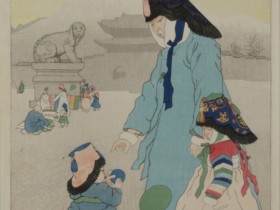 The Cultural Heritage Administration (Administrator Choi Eung-chon) will designate “hanbok saengwal” as National Intangible Cultural Heritage.< 손바느질로 한복을 만들고 있는 모습(조바위의 장식대기) > The Cultural Heritage Administration (Administrator Choi Eung-chon) will designate "hanbok saengwal” as National Intangible Cultural Heritage. Koreans have long transmitted the hanbok (traditional Korean clothes) culture in various ways throughout the history. Hanbok saenghwal is hanbok-derived traditional lifestyle and knowledge that embodies Korean people’s identity and values. Hanbok saenghwal refers to a series of cultural practices which encompass the whole experience of making, wearing, and enjoying hanbok that has been practiced in accordance with specific etiquettes and formalities, differently for each occasion ? ceremonies, rituals, traditional holidays, or recreational events. Hanbok consists of a jeogori (top) and either a chima (skirt) or baji (trousers) with otgoreum (ribbon knotted to close the top) completing its distinct look. It is designed to be worn from the lower garment first and then the upper part. The Intangible Cultural Heritage Committee decided to designate the item as "hanbok saenghwal” instead of its provisional name "hanbok wearing,” considering it better represents the hanbok culture as a whole. Hanbok saenghwal comprehensively encompasses cultural experiences of wearing, making, and enjoying hanbok as well as intangible characteristics of hanbok itself. Hanbok saenghwal has been passed down within families. Koreans keep the tradition of wearing hanbok on traditional holidays like Seollal (Korean Lunar New Year) or Chuseok (Korean equivalent of the thanksgiving holiday), as well as for special occasions like first birthdays, weddings, funerals and ancestral ceremonies. It is true that contemporary Koreans wear hanbok far less frequently than their ancestors. However, hanbok is still worn by Korean people as a means to show respect and courtesy. Before the industrialization period, women used to sew or mend hanbok for their own family members. On traditional holidays, particularly when the seasons change, Koreans would get themselves a new fabric and make clothes to mark the beginning of a new season in hopes for good health and wellbeing. This custom is called differently for each holiday: Seolbim, Chuseokbim and Danobim respectively for Seollal, Chuseok, and Dano (the fifth day of the fifth month of the lunar calendar). Likewise, hanbok is more than just a piece of clothing to Koreans, an important custom through which people have practiced courtesy and wished for each family member’s good health and well-being. This is why hanbok surely is a valuable intangible asset. The fact that ancient Koreans also wore hanbok is evidenced by various artifacts and records such as tomb murals from the Goguryeo dynasty (37 B.C.- A.D. 668), clay figures from the Silla dynasty (57 B.C.?A.D. 935), as well as historical documents from China. It was during Korea’s three kingdoms period (57 B.C.-A.D. 668) when the two-piece, top-and-bottom structure of Korean clothes was basically established. The structure kept evolving and transforming based on our distinct clothing culture until the Joseon dynasty (1392-1910), when the prototype of our own clothes was established. In April of 1900, the government announced a new regulation to officially adopt Western-style uniforms for state officials. With this, Koreans who used to wear only hanbok for thousands of years began to wear both Western-style suits and hanbok concurrently. It is believed that our clothes were called "hanbok” to be distinguished from the foreign clothes ? as "han” refers to "Korean” and "bok” refers to "clothing” ? with Korea opening its ports to the outside world in 1876. However, the exact origin of the word "hanbok” is yet unclear. Although terminology for Korean attire has varied such as "Joseon-ui (Joseon’s attire)” used in a 1881 record of Seungjeongwon Ilgi (the diaries of the royal secretariat), or "hanbok” in a 1894 article from Japanese newspaper, all these historical records show how hanbok embodied Koreans’ lifestyle and culture as well as societal and national spirit at the time. There are special types of hanbok for certain occasions. "Baenaet jeogori” is hanbok for newborn babies. To protect babies’ soft skin, it is made with as few seams as possible. Hanbok called "Kachi durumagi” was named after Kachi seollal, another name of the New Year’s Eve, and children traditionally wore it on the New Year’s Eve and also on the New Year’s Day sometimes. Today, contemporary Koreans dress their babies with Kachi durumagi for the baby’s first birthday party. This outfit has a bright array of colors on its cuff, which reflects people’s hopes to drive out the evil spirits while bringing in good fortunes. For the wedding ceremony, brides traditionally wore a green jeogori and a crimson skirt, as well as ceremonial outerwear called hwalot or wonsam, with jokduri (flower headwear) on their head. For funerals, a shroud for the dead was made without a knot as knots were believed to bring bad luck to the descendants. Koreans also believed they could live long if they prepare the shrouds during the leap months while they are alive. Introduction of Western-style clothing brought about changes to clothes and lifestyle of Koreans. Western clothing replaced hanbok in Korean’s everyday clothes as it was considered more practical and convenient. Hanbok became simpler in its form and began to be reserved for special occasions. Nonetheless, hanbok-wearing still remains today as a way of showing courtesy on special occasions. "Hanbok saenghwal” was designated as National Intangible Cultural Heritage for the following reasons. ▲First, it has long been passed down from generation to generation across the Korean peninsula. ▲Second, records on hanbok have been found from historical artifacts and documents, such as murals of Goguryeo tombs, clay dolls from the Silla Dynasty and historical documents of China. ▲Third, extensive studies on hanbok are currently underway in various fields like history, aesthetics, design, fashion, technology, management, marketing, industry, and education, which will further contribute as valuable academic resources. ▲Forth, it is still practiced particularly within families as a way to show courtesy during traditional holidays. ▲Lastly, traditional knowledge of hanbok saenghwal is transmitted and safeguarded by diverse communities, not only by families but also businesses or research institutions. Meanwhile, the Cultural Heritage Administration will not recognize a specific group or person as a transmitter for the designation, as hanbok saenghwal is a cultural tradition that is being practiced by all Koreans across the Korean peninsula, so are the cases of "kimchi-making” and "jang-making (Korean sauce and paste making).” * National Intangible Cultural Heritage items that do not recognize a specific group or person as a transmitter for the designation (14 items in total as of June 2022):Arirang (Traditional folk song); Jeda (Tea making); Ssireum (Korean wrestling); Haenyeo (Women divers); Kimchi Damgeugi (Kimchi making); Jeyeom (Traditional salt making); Ondol (Underfloor heating system); Jang Damgeugi (Korean sauce and paste making); Traditional Fish-Eosal (Fishing weir); Hwalssoki (Traditional archery); Insam Jaebae and Yakyong Munhwa (Cultivation of Ginseng and its medicinal application); Makgeolli Bitki (Makgeolli making and sharing); Tteok Mandeulgi (Tteok making and sharing); Getbol Eoro (Tidal flat harvesting) The Cultural Heritage Administration will continue to support hanbok saenghwal and other intangible cultural heritage items that are being widely transmitted throughout the nation. It will actively encourage academic research and transmission programs which will promote people to share the values of intangible cultural heritage and participate in the future transmission. The Cultural Heritage Administration is also committed to expand the scope of safeguarding practices by identifying and designating more items as national intangible cultural heritage to facilitate wider range of our traditional culture to be safeguarded and passed down to our future generation.
The Cultural Heritage Administration (Administrator Choi Eung-chon) will designate “hanbok saengwal” as National Intangible Cultural Heritage.< 손바느질로 한복을 만들고 있는 모습(조바위의 장식대기) > The Cultural Heritage Administration (Administrator Choi Eung-chon) will designate "hanbok saengwal” as National Intangible Cultural Heritage. Koreans have long transmitted the hanbok (traditional Korean clothes) culture in various ways throughout the history. Hanbok saenghwal is hanbok-derived traditional lifestyle and knowledge that embodies Korean people’s identity and values. Hanbok saenghwal refers to a series of cultural practices which encompass the whole experience of making, wearing, and enjoying hanbok that has been practiced in accordance with specific etiquettes and formalities, differently for each occasion ? ceremonies, rituals, traditional holidays, or recreational events. Hanbok consists of a jeogori (top) and either a chima (skirt) or baji (trousers) with otgoreum (ribbon knotted to close the top) completing its distinct look. It is designed to be worn from the lower garment first and then the upper part. The Intangible Cultural Heritage Committee decided to designate the item as "hanbok saenghwal” instead of its provisional name "hanbok wearing,” considering it better represents the hanbok culture as a whole. Hanbok saenghwal comprehensively encompasses cultural experiences of wearing, making, and enjoying hanbok as well as intangible characteristics of hanbok itself. Hanbok saenghwal has been passed down within families. Koreans keep the tradition of wearing hanbok on traditional holidays like Seollal (Korean Lunar New Year) or Chuseok (Korean equivalent of the thanksgiving holiday), as well as for special occasions like first birthdays, weddings, funerals and ancestral ceremonies. It is true that contemporary Koreans wear hanbok far less frequently than their ancestors. However, hanbok is still worn by Korean people as a means to show respect and courtesy. Before the industrialization period, women used to sew or mend hanbok for their own family members. On traditional holidays, particularly when the seasons change, Koreans would get themselves a new fabric and make clothes to mark the beginning of a new season in hopes for good health and wellbeing. This custom is called differently for each holiday: Seolbim, Chuseokbim and Danobim respectively for Seollal, Chuseok, and Dano (the fifth day of the fifth month of the lunar calendar). Likewise, hanbok is more than just a piece of clothing to Koreans, an important custom through which people have practiced courtesy and wished for each family member’s good health and well-being. This is why hanbok surely is a valuable intangible asset. The fact that ancient Koreans also wore hanbok is evidenced by various artifacts and records such as tomb murals from the Goguryeo dynasty (37 B.C.- A.D. 668), clay figures from the Silla dynasty (57 B.C.?A.D. 935), as well as historical documents from China. It was during Korea’s three kingdoms period (57 B.C.-A.D. 668) when the two-piece, top-and-bottom structure of Korean clothes was basically established. The structure kept evolving and transforming based on our distinct clothing culture until the Joseon dynasty (1392-1910), when the prototype of our own clothes was established. In April of 1900, the government announced a new regulation to officially adopt Western-style uniforms for state officials. With this, Koreans who used to wear only hanbok for thousands of years began to wear both Western-style suits and hanbok concurrently. It is believed that our clothes were called "hanbok” to be distinguished from the foreign clothes ? as "han” refers to "Korean” and "bok” refers to "clothing” ? with Korea opening its ports to the outside world in 1876. However, the exact origin of the word "hanbok” is yet unclear. Although terminology for Korean attire has varied such as "Joseon-ui (Joseon’s attire)” used in a 1881 record of Seungjeongwon Ilgi (the diaries of the royal secretariat), or "hanbok” in a 1894 article from Japanese newspaper, all these historical records show how hanbok embodied Koreans’ lifestyle and culture as well as societal and national spirit at the time. There are special types of hanbok for certain occasions. "Baenaet jeogori” is hanbok for newborn babies. To protect babies’ soft skin, it is made with as few seams as possible. Hanbok called "Kachi durumagi” was named after Kachi seollal, another name of the New Year’s Eve, and children traditionally wore it on the New Year’s Eve and also on the New Year’s Day sometimes. Today, contemporary Koreans dress their babies with Kachi durumagi for the baby’s first birthday party. This outfit has a bright array of colors on its cuff, which reflects people’s hopes to drive out the evil spirits while bringing in good fortunes. For the wedding ceremony, brides traditionally wore a green jeogori and a crimson skirt, as well as ceremonial outerwear called hwalot or wonsam, with jokduri (flower headwear) on their head. For funerals, a shroud for the dead was made without a knot as knots were believed to bring bad luck to the descendants. Koreans also believed they could live long if they prepare the shrouds during the leap months while they are alive. Introduction of Western-style clothing brought about changes to clothes and lifestyle of Koreans. Western clothing replaced hanbok in Korean’s everyday clothes as it was considered more practical and convenient. Hanbok became simpler in its form and began to be reserved for special occasions. Nonetheless, hanbok-wearing still remains today as a way of showing courtesy on special occasions. "Hanbok saenghwal” was designated as National Intangible Cultural Heritage for the following reasons. ▲First, it has long been passed down from generation to generation across the Korean peninsula. ▲Second, records on hanbok have been found from historical artifacts and documents, such as murals of Goguryeo tombs, clay dolls from the Silla Dynasty and historical documents of China. ▲Third, extensive studies on hanbok are currently underway in various fields like history, aesthetics, design, fashion, technology, management, marketing, industry, and education, which will further contribute as valuable academic resources. ▲Forth, it is still practiced particularly within families as a way to show courtesy during traditional holidays. ▲Lastly, traditional knowledge of hanbok saenghwal is transmitted and safeguarded by diverse communities, not only by families but also businesses or research institutions. Meanwhile, the Cultural Heritage Administration will not recognize a specific group or person as a transmitter for the designation, as hanbok saenghwal is a cultural tradition that is being practiced by all Koreans across the Korean peninsula, so are the cases of "kimchi-making” and "jang-making (Korean sauce and paste making).” * National Intangible Cultural Heritage items that do not recognize a specific group or person as a transmitter for the designation (14 items in total as of June 2022):Arirang (Traditional folk song); Jeda (Tea making); Ssireum (Korean wrestling); Haenyeo (Women divers); Kimchi Damgeugi (Kimchi making); Jeyeom (Traditional salt making); Ondol (Underfloor heating system); Jang Damgeugi (Korean sauce and paste making); Traditional Fish-Eosal (Fishing weir); Hwalssoki (Traditional archery); Insam Jaebae and Yakyong Munhwa (Cultivation of Ginseng and its medicinal application); Makgeolli Bitki (Makgeolli making and sharing); Tteok Mandeulgi (Tteok making and sharing); Getbol Eoro (Tidal flat harvesting) The Cultural Heritage Administration will continue to support hanbok saenghwal and other intangible cultural heritage items that are being widely transmitted throughout the nation. It will actively encourage academic research and transmission programs which will promote people to share the values of intangible cultural heritage and participate in the future transmission. The Cultural Heritage Administration is also committed to expand the scope of safeguarding practices by identifying and designating more items as national intangible cultural heritage to facilitate wider range of our traditional culture to be safeguarded and passed down to our future generation. -
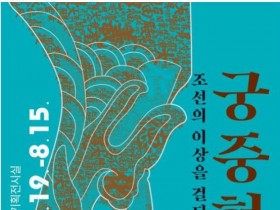 National Palace Museum of Korea Presents the Special Exhibition Hyeonpan: Hanging Boards Inscribing the Ideals of JoseonFrom May 18 to August 15, the National Palace Museum of Korea (Director: Kim In Kyu), an affiliate of the Cultural Heritage Administration of Korea, is presenting a special exhibition entitled Hyeonpan: Hanging Boards Inscribing the Ideals of Joseon in its Special Exhibition Gallery. The exhibition presents some one hundred items, including eighty-one royal hanging boards that were inscribed in 2018 on UNESCO’s Memory of the World Register for Asia and the Pacific and related relics such as the nationally designated treasure Gisa gyecheop* and tools for gakjajang.* *Gisa gyecheop: A painting album made in 1719 (the 45th year of the reign of King Sukjong) in commemoration of King Sukjong’s entry into the Giroso (the Office of Elders).*Gakjajang: Master artisans who engraved letters or images on wooden boards and otherwise carried out the production of hanging boards. The exhibition is comprised of five sections ? Prologue: Royal Hanging Boards Brought Down to Us; Part I: Making Hanging Boards; Part II: Embodying Ideals; Part III: Hanging Boards; and Epilogue: Hanging Boards Becoming Part of Life by Transcending Time. The exhibition is particularly meaningful in that it brings together and showcases the royal hanging boards housed in the storage of the National Palace Museum of Korea. The introduction area, "Royal Hanging Boards Brought Down to Us,” presents a video highlighting the history of the Joseon-era royal hanging boards. It covers the time from the damage that they suffered during the period of Japanese occupation until their becoming part of the collection of National Palace Museum of Korea, reminding us of the importance of safeguarding and preserving cultural heritage. The Hanging Board from Daeanmun (Gate of Great Comfort) that had been hung on the main gate of Gyeongungung Palace (present-day Deoksugung Palace), which was a symbolic site in modern Korean history, offers visitors an understanding of the wishes of the people at the time who desired to be ‘greatly comforted’ under turbulent circumstances. This is the largest hanging board (124×374 cm) in the National Palace Museum of Korea collection. The first section, "Making Hanging Boards,” presents the calligraphic styles, materials, and production techniques of hanging boards and sheds light on the artisans sustaining the tradition of the production of hanging boards. Hanging boards were made by artisans with specialties including calligraphic engraving and ornamental painting. The traditional production methods are presented in a video. Also introduced in this section is calligraphy on hanging boards based on models created by diverse figures ranging from kings, renowned calligraphers, and even eunuchs. Among them, Hanging Board with a Record on a Shrine to Patriotic Heroes (produced in 1582)* was written by the noted calligrapher Han Ho (1543?1605) and is the oldest example in the museum’s collection. *Hanging Board with a Record on a Shrine to Patriotic Heroes: A hanging board inscribed with the history of Uiyeolsa, a shrine dedicated to loyal subjects during the reign of King Uija of the Baekje Kingdom and of King Gongmin of the Goryeo Dynasty. The second section, "Embodying Ideals,” contains four themes that highlight hanging boards displaying the ideology of governance by virtue. The subsection "Hanging Boards that Reflect the Duties of a Sage Ruler” presents examples displaying the striving of kings and crown princes toward becoming a sage ruler through learning; "Hanging Boards that Reflect a King’s Affection for His People” presents examples of efforts to stabilize the lives of the people and educate them on morality; "Hanging Boards that Reflect the Ties between a King and His Subjects” presents examples of kings’ efforts to achieve a balance between sovereign power and the autonomy of subjects; and "Hanging Boards that Reflect Filial Piety” presents examples of respect for and honoring parents and ancestors as part of the practice of filial piety. The third section, "Hanging Boards,” contains an impressive display that brings together royal hanging boards with diverse functions on a single wall. Hanging boards sometimes functioned as a sort of bulletin board or official document, for example those featuring a king’s orders and guidelines for his subjects, the assigned duties and rules for government offices, lists of officials and their tasks, and dates of national events. Those with a king’s personal feelings or experiences served as a window through which the king could reveal his thoughts and feelings to the public. These hanging boards demonstrate how the Joseon royal court attempted to regularly communicate with the people. The final part of the exhibition, "Hanging Boards Becoming Part of Life by Transcending Time,” uses photographs and videos to explore the hanging boards that we find around us today and the people working to safeguard them and preserve their value. This section demonstrates that the demand for communication in the past was not so different from that of the present even though times and circumstances have changed significantly. The exhibition offers diverse media content to enhance the understanding of hanging boards. An animated video of a scene of King Jeongjo distributing rice to the people in front Honghwamun Gate (the main gate of Changgyeonggung Palace) was produced based on written records of the scene (Honghwamun samido) from the Royal Protocol of King Jeongjo’s Visit to His Father’s Tomb in the Eulmyo Year. It is presented to help visitors better understand the meaning of honghwa.* Also on view is a video that helps visitors to understand the names of various hanging boards.*Honghwa: Inspiring the people through the exercise of virtue There is also a participatory space in which visitors can try their hands at writing hanging boards using digital technology. The hanging boards they design will appear on a large wall featuring an image based on Eastern Palaces, a painting depicting the layout of Changdeokgung and Changgyeonggung Palaces. Moreover, videos including a curator-guided tour of the exhibition and interviews with master artisans will be available on YouTube. Virtual reality (VR) components presenting panoramic views of the gallery will also be unveiled. Four products (a phone strap, keychain, cardholder necklace, and badge) produced in collaboration with the Korea Cultural Heritage Foundation (Chairperson: Choi Young-chang) will be available for purchase. *Cultural Heritage Administration YouTube: https://www.youtube.com/chluvu*National Palace Museum of Korea YouTube: https://www.youtube.com/gogungmuseum*Korea Cultural Heritage Foundation website for purchase of goods: https://khmall.or.kr/ The National Palace Museum of Korea hopes that this exhibition will serve as an opportunity for visitors to better understand how the Joseon royal court and the ruling class embedded their wishes for harmonious governance and the prosperity of the nation on hanging boards and to think about their own desires for their personal spaces.
National Palace Museum of Korea Presents the Special Exhibition Hyeonpan: Hanging Boards Inscribing the Ideals of JoseonFrom May 18 to August 15, the National Palace Museum of Korea (Director: Kim In Kyu), an affiliate of the Cultural Heritage Administration of Korea, is presenting a special exhibition entitled Hyeonpan: Hanging Boards Inscribing the Ideals of Joseon in its Special Exhibition Gallery. The exhibition presents some one hundred items, including eighty-one royal hanging boards that were inscribed in 2018 on UNESCO’s Memory of the World Register for Asia and the Pacific and related relics such as the nationally designated treasure Gisa gyecheop* and tools for gakjajang.* *Gisa gyecheop: A painting album made in 1719 (the 45th year of the reign of King Sukjong) in commemoration of King Sukjong’s entry into the Giroso (the Office of Elders).*Gakjajang: Master artisans who engraved letters or images on wooden boards and otherwise carried out the production of hanging boards. The exhibition is comprised of five sections ? Prologue: Royal Hanging Boards Brought Down to Us; Part I: Making Hanging Boards; Part II: Embodying Ideals; Part III: Hanging Boards; and Epilogue: Hanging Boards Becoming Part of Life by Transcending Time. The exhibition is particularly meaningful in that it brings together and showcases the royal hanging boards housed in the storage of the National Palace Museum of Korea. The introduction area, "Royal Hanging Boards Brought Down to Us,” presents a video highlighting the history of the Joseon-era royal hanging boards. It covers the time from the damage that they suffered during the period of Japanese occupation until their becoming part of the collection of National Palace Museum of Korea, reminding us of the importance of safeguarding and preserving cultural heritage. The Hanging Board from Daeanmun (Gate of Great Comfort) that had been hung on the main gate of Gyeongungung Palace (present-day Deoksugung Palace), which was a symbolic site in modern Korean history, offers visitors an understanding of the wishes of the people at the time who desired to be ‘greatly comforted’ under turbulent circumstances. This is the largest hanging board (124×374 cm) in the National Palace Museum of Korea collection. The first section, "Making Hanging Boards,” presents the calligraphic styles, materials, and production techniques of hanging boards and sheds light on the artisans sustaining the tradition of the production of hanging boards. Hanging boards were made by artisans with specialties including calligraphic engraving and ornamental painting. The traditional production methods are presented in a video. Also introduced in this section is calligraphy on hanging boards based on models created by diverse figures ranging from kings, renowned calligraphers, and even eunuchs. Among them, Hanging Board with a Record on a Shrine to Patriotic Heroes (produced in 1582)* was written by the noted calligrapher Han Ho (1543?1605) and is the oldest example in the museum’s collection. *Hanging Board with a Record on a Shrine to Patriotic Heroes: A hanging board inscribed with the history of Uiyeolsa, a shrine dedicated to loyal subjects during the reign of King Uija of the Baekje Kingdom and of King Gongmin of the Goryeo Dynasty. The second section, "Embodying Ideals,” contains four themes that highlight hanging boards displaying the ideology of governance by virtue. The subsection "Hanging Boards that Reflect the Duties of a Sage Ruler” presents examples displaying the striving of kings and crown princes toward becoming a sage ruler through learning; "Hanging Boards that Reflect a King’s Affection for His People” presents examples of efforts to stabilize the lives of the people and educate them on morality; "Hanging Boards that Reflect the Ties between a King and His Subjects” presents examples of kings’ efforts to achieve a balance between sovereign power and the autonomy of subjects; and "Hanging Boards that Reflect Filial Piety” presents examples of respect for and honoring parents and ancestors as part of the practice of filial piety. The third section, "Hanging Boards,” contains an impressive display that brings together royal hanging boards with diverse functions on a single wall. Hanging boards sometimes functioned as a sort of bulletin board or official document, for example those featuring a king’s orders and guidelines for his subjects, the assigned duties and rules for government offices, lists of officials and their tasks, and dates of national events. Those with a king’s personal feelings or experiences served as a window through which the king could reveal his thoughts and feelings to the public. These hanging boards demonstrate how the Joseon royal court attempted to regularly communicate with the people. The final part of the exhibition, "Hanging Boards Becoming Part of Life by Transcending Time,” uses photographs and videos to explore the hanging boards that we find around us today and the people working to safeguard them and preserve their value. This section demonstrates that the demand for communication in the past was not so different from that of the present even though times and circumstances have changed significantly. The exhibition offers diverse media content to enhance the understanding of hanging boards. An animated video of a scene of King Jeongjo distributing rice to the people in front Honghwamun Gate (the main gate of Changgyeonggung Palace) was produced based on written records of the scene (Honghwamun samido) from the Royal Protocol of King Jeongjo’s Visit to His Father’s Tomb in the Eulmyo Year. It is presented to help visitors better understand the meaning of honghwa.* Also on view is a video that helps visitors to understand the names of various hanging boards.*Honghwa: Inspiring the people through the exercise of virtue There is also a participatory space in which visitors can try their hands at writing hanging boards using digital technology. The hanging boards they design will appear on a large wall featuring an image based on Eastern Palaces, a painting depicting the layout of Changdeokgung and Changgyeonggung Palaces. Moreover, videos including a curator-guided tour of the exhibition and interviews with master artisans will be available on YouTube. Virtual reality (VR) components presenting panoramic views of the gallery will also be unveiled. Four products (a phone strap, keychain, cardholder necklace, and badge) produced in collaboration with the Korea Cultural Heritage Foundation (Chairperson: Choi Young-chang) will be available for purchase. *Cultural Heritage Administration YouTube: https://www.youtube.com/chluvu*National Palace Museum of Korea YouTube: https://www.youtube.com/gogungmuseum*Korea Cultural Heritage Foundation website for purchase of goods: https://khmall.or.kr/ The National Palace Museum of Korea hopes that this exhibition will serve as an opportunity for visitors to better understand how the Joseon royal court and the ruling class embedded their wishes for harmonious governance and the prosperity of the nation on hanging boards and to think about their own desires for their personal spaces. -
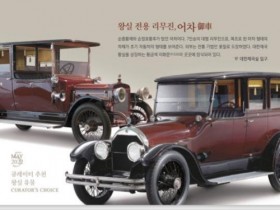 The National Palace Museum of Korea Presents “Royal Vehicles” as the Curator’s Choice for MayThe National Palace Museum of Korea (Director: Kim In Kyu), an affiliate of the Cultural Heritage Administration of Korea, has selected "Royal Vehicles” as its "Curator’s Choice from the Royal Treasures” for the month of May. In addition to being displayed in the museum, they will be presented online in a YouTube broadcast on the channels of the Cultural Heritage Administration and the National Palace Museum of Korea starting May 1. * National Palace Museum of Korea YouTube: https://www.youtube.com/gogungmuseum** Cultural Heritage Administration YouTube: https://www.youtube.com/chluvu These royal limousines respectively carried Emperor Sunjong (r. 1907?1910) and his consort Empress Sunjeong (1894?1966). Sunjong’s was manufactured by the American company General Motors and Sunjeong’s was a British product of the Daimler Motor Company. The vehicles suffered considerable damage while in extended storage in the Royal Garage (previously Bincheong Hall) due to natural corrosion and losses of parts. They underwent five years of repair and restoration beginning in 1997 and were brought up to their current state. They were transferred to the National Palace Museum of Korea in 2005 and have been on display ever since. Both large limousines are equipped with seven seats and feature a body resembling a wooden horse-drawn carriage, thereby demonstrating the evolution of early automobiles. The exterior was finished using ottchil, a traditional Korean lacquering technique. The doors of the vehicles are decorated with designs of a type of plum blossom(yihwamun) that symbolized the Korean imperial court, and the interior is lined with gold silk with yihwamun patterns to display the dignity of the imperial court. The limousines are an important source of information about the culture of the Korean imperial court. Moreover, as high-end limousines incorporating the automobile technology available at the time, the vehicles inform on the development of the automobile. In recognition of their importance, the limousines were designated as National Registered Cultural Heritage in 2006. With the lifting of COVID-19 restrictions, visitors to the museum will be allowed without prior reservations and there will be no limits on the number of people. Moreover, visitors will be able to explore the royal vehicles along with enriching commentary complemented by videos and images delivered by a robot docent named Gobuk. Interactive quizzes will also be provided. Those who are unable to visit the gallery in person can still enjoy this month’s Curator’s Choice virtually through a video with Korean and English subtitles available on the museum’s website (gogung.go.kr) and on the YouTube channels of the museum and the Cultural Heritage Administration of Korea.
The National Palace Museum of Korea Presents “Royal Vehicles” as the Curator’s Choice for MayThe National Palace Museum of Korea (Director: Kim In Kyu), an affiliate of the Cultural Heritage Administration of Korea, has selected "Royal Vehicles” as its "Curator’s Choice from the Royal Treasures” for the month of May. In addition to being displayed in the museum, they will be presented online in a YouTube broadcast on the channels of the Cultural Heritage Administration and the National Palace Museum of Korea starting May 1. * National Palace Museum of Korea YouTube: https://www.youtube.com/gogungmuseum** Cultural Heritage Administration YouTube: https://www.youtube.com/chluvu These royal limousines respectively carried Emperor Sunjong (r. 1907?1910) and his consort Empress Sunjeong (1894?1966). Sunjong’s was manufactured by the American company General Motors and Sunjeong’s was a British product of the Daimler Motor Company. The vehicles suffered considerable damage while in extended storage in the Royal Garage (previously Bincheong Hall) due to natural corrosion and losses of parts. They underwent five years of repair and restoration beginning in 1997 and were brought up to their current state. They were transferred to the National Palace Museum of Korea in 2005 and have been on display ever since. Both large limousines are equipped with seven seats and feature a body resembling a wooden horse-drawn carriage, thereby demonstrating the evolution of early automobiles. The exterior was finished using ottchil, a traditional Korean lacquering technique. The doors of the vehicles are decorated with designs of a type of plum blossom(yihwamun) that symbolized the Korean imperial court, and the interior is lined with gold silk with yihwamun patterns to display the dignity of the imperial court. The limousines are an important source of information about the culture of the Korean imperial court. Moreover, as high-end limousines incorporating the automobile technology available at the time, the vehicles inform on the development of the automobile. In recognition of their importance, the limousines were designated as National Registered Cultural Heritage in 2006. With the lifting of COVID-19 restrictions, visitors to the museum will be allowed without prior reservations and there will be no limits on the number of people. Moreover, visitors will be able to explore the royal vehicles along with enriching commentary complemented by videos and images delivered by a robot docent named Gobuk. Interactive quizzes will also be provided. Those who are unable to visit the gallery in person can still enjoy this month’s Curator’s Choice virtually through a video with Korean and English subtitles available on the museum’s website (gogung.go.kr) and on the YouTube channels of the museum and the Cultural Heritage Administration of Korea. -
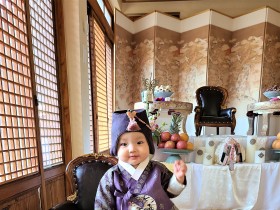 ‘Hanbok-wearing’To Become National Intangible Cultural HeritageThe Cultural Heritage Administration (Administrator Kim Hyun-mo) plans to designate hanbok-wearing as a National Intangible Cultural Heritage item. Koreans have worn the traditional Korean attire in one way or another in their lives throughout history. It is a traditional way of life and knowledge that embodies the Korean people’s identity and values. Hanbok consists of the top and the bottom which can be either a skirt or pants. Otgoreum, the ribbons knotted to close the top, completes the look. Hanbok is designed so that people wear the bottom first and then the top. The whole experience of wearing hanbok is, in itself, a culture as it involves unique etiquette and formalities and is executed differently for different occasions ? ceremonies and rituals or traditional holidays or recreational events. Hanbok-wearing has been passed down within families. Koreans today generally wear the traditional wardrobe on traditional holidays like Seollal (the Lunar New Year) or Chuseok (Korean equivalent of the thanksgiving holiday), as well as social rituals like first birthdays, weddings, funerals and ancestral ceremonies. It is true that contemporary Koreans are wearing hanbok far less than their ancestors. However, the fact that people wear hanbok to show their respect remains unchanged. Before the industrialization, housewives would make new hanbok for their family members and mend them when necessary, at home. In particular, on traditional holidays Koreans would get new fabric and make clothes. Such a custom is called Seolbim for Seollal, Chuseokbim for Chuseok and Danobim for Dano (which falls on the fifth day of the fifth month of the lunar calendar). It was customary that Koreans got themselves new hanbok for holidays that mark the beginning of a new season with hopes for good health and peace. As can be seen here, hanbok to Koreans is more than just a piece of clothing, but an important medium through which they showed respect and expressed wishes for good health and peace, which makes it an important intangible asset. Ancient Koreans are also seen donning hanbok in various artifacts and records like the tomb murals from the Goguryeo dynasty (37 B.C.- A.D. 668), clay figures dating to the Silla dynasty (57 B.C.?A.D. 935) as well as historical documents from China. It was during Korea’s three kingdoms period (57 B.C.-A.D. 668) that the two-piece, top-and-bottom structure of hanbok was completed. Since then, its form evolved and transformed repeatedly until the Joseon dynasty (1392-1910) which was when the prototype of hanbok that we know of today was established. In April of 1900, a new regulation on the dress code of civil servants was proclaimed, which changed civil servants’ official attire to Western-style suits from hanbok. With this, Koreans have begun to wear both Western-style suits and hanbok, after wearing hanbok only for thousands of years. It is believed the word ‘hanbok’ is used in order to distinguish Korean wardrobe from that of the Western culture since Korea’s opening of its ports to the outside world in 1876. (Han means Korean.) However, the exact origin of the word ‘Hanbok’ is unclear. The word ‘Joseon-ui’ or ‘Joseon’s attire’ is used in an 1881 record of Seungjeongwon Ilgi (the diaries of the royal secretariat), while the word ‘hanbok’ can be found in an 1894 article from a Japanese newspaper. What is clear is that even in the years leading up to the introduction of Western-style clothing to Korea, hanbok embodied Koreans’ lifestyle and culture as well as societal and national spirit. There are special types of hanbok for certain occasions. ‘Baenaet jeogori’ is the hanbok for newborn babies. For babies’ fragile skin, it’s made with as few seams as possible. The hanbok known as ‘Kachi durumagi’ was traditionally worn on New Year’s Eve ? thus the name, as New Year’s Eve was also known as Kachi seollal. Sometimes, children donned Kachi durumagi on New Year’s Day. Today, contemporary Koreans generally dress their babies with Kachi durumagi on their first birthday party. On this specific outfit, the cuffs have a bright array of colors which reflects hopes for fighting off evil spirits and ushering in good fortune. During a wedding ceremony, a bride traditionally wears a green Jeogori (hanbok top) with crimson skirt as well as ceremonial outerwear Hwalot or wonsam, plus Jokduri or flower headwear on their head. For funerals, a shroud for the dead would be made without a knot as it was believed knots bring a bad luck for the descendants. Koreans also believed that if they made the shroud in advance on a leap month for someone when they are still alive, he or she would live a long life. Introduction of Western-style clothing brought about changes to Korean clothes and lifestyle. For daily wear, Koreans began wearing Western clothes mostly because they were more convenient. Hanbok also became simpler in its form and became something that Koreans reserved for special occasions. Nonetheless, what hasn’t changed is that wearing hanbok is a way of showing respect and bringing about a special version of oneself. ‘Hanbok wearing’ should be designated as national intangible culture heritage, as it ▲has a long history, being passed down through generations across the Korean peninsula, ▲can be found in relics and records like murals of Goguryeo tombs, clay dolls of Silla and historical documents of China, ▲is being studied extensively in various areas like history, aesthetics, design, fashion, technology, management, marketing, industry and education and continues to be a coveted study subject moving forward, ▲is still considered a way to show respect at traditional holidays and rites of passage, having been passed down within families, ▲and furthermore, is in itself cherished traditional knowledge not just in families and communities but also in production and research entities. But the Cultural Heritage Administration will not recognize a specific group or person in the designation, as it is a cultural tradition that all Koreans across the Korean peninsula keep, as are the cases with ‘kimchi-making’ and ‘jang-making (Korean sauce and paste making).’ * National Intangible Cultural Heritage items that do not recognize a specific group or person (Total: 14 items):Arirang (Traditional folk song); Jeda (Tea making); Ssireum (Korean wrestling); Haenyeo (Women divers); Kimchi Damgeugi (Kimchi making); Jeyeom (Traditional salt making); Ondol (Underfloor heating system); Jang Damgeugi (Korean sauce and paste making); Traditional Fish-Eosal (Fishing weir); Hwalssoki (Traditional archery); Insam Jaebae and Yakyong Munhwa (Cultivation of Ginseng and its medicinal application); Makgeolli Bitki (Makgeolli making and sharing); Tteok Mandeulgi (Tteok making and sharing); Getbol Eoro (Tidal flat harvesting) The Cultural Heritage Administration will receive opinions for 30 days on the planned designation of hanbok-wearing as national intangible cultural heritage, before making a final decision. People can share their views on the designation through the administration’s website (http://www.cha.go.kr).
‘Hanbok-wearing’To Become National Intangible Cultural HeritageThe Cultural Heritage Administration (Administrator Kim Hyun-mo) plans to designate hanbok-wearing as a National Intangible Cultural Heritage item. Koreans have worn the traditional Korean attire in one way or another in their lives throughout history. It is a traditional way of life and knowledge that embodies the Korean people’s identity and values. Hanbok consists of the top and the bottom which can be either a skirt or pants. Otgoreum, the ribbons knotted to close the top, completes the look. Hanbok is designed so that people wear the bottom first and then the top. The whole experience of wearing hanbok is, in itself, a culture as it involves unique etiquette and formalities and is executed differently for different occasions ? ceremonies and rituals or traditional holidays or recreational events. Hanbok-wearing has been passed down within families. Koreans today generally wear the traditional wardrobe on traditional holidays like Seollal (the Lunar New Year) or Chuseok (Korean equivalent of the thanksgiving holiday), as well as social rituals like first birthdays, weddings, funerals and ancestral ceremonies. It is true that contemporary Koreans are wearing hanbok far less than their ancestors. However, the fact that people wear hanbok to show their respect remains unchanged. Before the industrialization, housewives would make new hanbok for their family members and mend them when necessary, at home. In particular, on traditional holidays Koreans would get new fabric and make clothes. Such a custom is called Seolbim for Seollal, Chuseokbim for Chuseok and Danobim for Dano (which falls on the fifth day of the fifth month of the lunar calendar). It was customary that Koreans got themselves new hanbok for holidays that mark the beginning of a new season with hopes for good health and peace. As can be seen here, hanbok to Koreans is more than just a piece of clothing, but an important medium through which they showed respect and expressed wishes for good health and peace, which makes it an important intangible asset. Ancient Koreans are also seen donning hanbok in various artifacts and records like the tomb murals from the Goguryeo dynasty (37 B.C.- A.D. 668), clay figures dating to the Silla dynasty (57 B.C.?A.D. 935) as well as historical documents from China. It was during Korea’s three kingdoms period (57 B.C.-A.D. 668) that the two-piece, top-and-bottom structure of hanbok was completed. Since then, its form evolved and transformed repeatedly until the Joseon dynasty (1392-1910) which was when the prototype of hanbok that we know of today was established. In April of 1900, a new regulation on the dress code of civil servants was proclaimed, which changed civil servants’ official attire to Western-style suits from hanbok. With this, Koreans have begun to wear both Western-style suits and hanbok, after wearing hanbok only for thousands of years. It is believed the word ‘hanbok’ is used in order to distinguish Korean wardrobe from that of the Western culture since Korea’s opening of its ports to the outside world in 1876. (Han means Korean.) However, the exact origin of the word ‘Hanbok’ is unclear. The word ‘Joseon-ui’ or ‘Joseon’s attire’ is used in an 1881 record of Seungjeongwon Ilgi (the diaries of the royal secretariat), while the word ‘hanbok’ can be found in an 1894 article from a Japanese newspaper. What is clear is that even in the years leading up to the introduction of Western-style clothing to Korea, hanbok embodied Koreans’ lifestyle and culture as well as societal and national spirit. There are special types of hanbok for certain occasions. ‘Baenaet jeogori’ is the hanbok for newborn babies. For babies’ fragile skin, it’s made with as few seams as possible. The hanbok known as ‘Kachi durumagi’ was traditionally worn on New Year’s Eve ? thus the name, as New Year’s Eve was also known as Kachi seollal. Sometimes, children donned Kachi durumagi on New Year’s Day. Today, contemporary Koreans generally dress their babies with Kachi durumagi on their first birthday party. On this specific outfit, the cuffs have a bright array of colors which reflects hopes for fighting off evil spirits and ushering in good fortune. During a wedding ceremony, a bride traditionally wears a green Jeogori (hanbok top) with crimson skirt as well as ceremonial outerwear Hwalot or wonsam, plus Jokduri or flower headwear on their head. For funerals, a shroud for the dead would be made without a knot as it was believed knots bring a bad luck for the descendants. Koreans also believed that if they made the shroud in advance on a leap month for someone when they are still alive, he or she would live a long life. Introduction of Western-style clothing brought about changes to Korean clothes and lifestyle. For daily wear, Koreans began wearing Western clothes mostly because they were more convenient. Hanbok also became simpler in its form and became something that Koreans reserved for special occasions. Nonetheless, what hasn’t changed is that wearing hanbok is a way of showing respect and bringing about a special version of oneself. ‘Hanbok wearing’ should be designated as national intangible culture heritage, as it ▲has a long history, being passed down through generations across the Korean peninsula, ▲can be found in relics and records like murals of Goguryeo tombs, clay dolls of Silla and historical documents of China, ▲is being studied extensively in various areas like history, aesthetics, design, fashion, technology, management, marketing, industry and education and continues to be a coveted study subject moving forward, ▲is still considered a way to show respect at traditional holidays and rites of passage, having been passed down within families, ▲and furthermore, is in itself cherished traditional knowledge not just in families and communities but also in production and research entities. But the Cultural Heritage Administration will not recognize a specific group or person in the designation, as it is a cultural tradition that all Koreans across the Korean peninsula keep, as are the cases with ‘kimchi-making’ and ‘jang-making (Korean sauce and paste making).’ * National Intangible Cultural Heritage items that do not recognize a specific group or person (Total: 14 items):Arirang (Traditional folk song); Jeda (Tea making); Ssireum (Korean wrestling); Haenyeo (Women divers); Kimchi Damgeugi (Kimchi making); Jeyeom (Traditional salt making); Ondol (Underfloor heating system); Jang Damgeugi (Korean sauce and paste making); Traditional Fish-Eosal (Fishing weir); Hwalssoki (Traditional archery); Insam Jaebae and Yakyong Munhwa (Cultivation of Ginseng and its medicinal application); Makgeolli Bitki (Makgeolli making and sharing); Tteok Mandeulgi (Tteok making and sharing); Getbol Eoro (Tidal flat harvesting) The Cultural Heritage Administration will receive opinions for 30 days on the planned designation of hanbok-wearing as national intangible cultural heritage, before making a final decision. People can share their views on the designation through the administration’s website (http://www.cha.go.kr). -
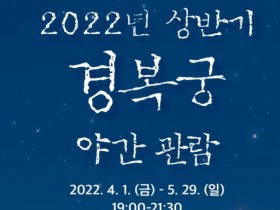 Gyeongbokgung Palace Nighttime Tour Program started for the 1st half of 2022 - Gyeongbokgung Palace Nighttime Tour Program for the first half of 2022The Gyeongbokgung Palace Management Office (Head Choi Jae-hyeok) of the Cultural Heritage Administration Royal Palaces and Tombs Center is holding the Gyeongbokgung Palace Nighttime Tour Program for the first half of 2022 for 38 days between April 1 and May 29. * During the period, closed on △ every Monday and Tuesday (May 11 - 15) △ Palace Cultural Festival will be held. Also, inside of Gyeonghoeru (national treasure) which is the largest two-story pavilion architecture in Korea will be opened for special tour for seven months from April 1 to October 31. The Gyeongbokgung Palace nighttime tour program is a representative royal palace utilization program that enjoys great popularity, with its tickets sold out as soon as the reservation service starts every year. Offering a beautiful nighttime view of Gyeongbokgung Palace with spring blossom during the first half, Gyeonghoeru where our traditional weeping cherry comes out splendidly and Amisan Chimney where azalea blossoms between delicate lighting are famous night view places to enjoy the atmosphere of spring night. The program can accommodate up to 1,300 visitors per day, visitors excluding foreigners (site issuance of 100 tickers a day) should buy tickets through internet booking (11Street, https://ticket.11st.co.kr/two tickets per person) and may receive their tickets from the ticket machine of ticket box on corresponding day. Viewing is possible from 19:00 to 21:30 (final admission is possible until 20:30). Admission is free for persons of national merit and their spouse, persons with severe disability and their guide, persons with mild disability, National Honorees, children aged 6 and below, seniors aged 65 and above, and visitors dressed in hanbok. Visitors dressed in hanbok need to have a ticket issued at the ticket booth on the day, but others who are eligible for free admission can enter the palace with their ID and/or the relevant document at Heungnyemun Gate without having a ticket issued. * Guardians of a child aged 6 and below must reserve the program online in advance(Korean, Foreigner) or have a ticket issued at the palace(Foreigner). The Gyeongbokgung Palace Management Office intends to implement the safety rules so visitors need to wear a mask, check their body temperature before admission, and maintain physical distancing (2 m) during Gyeongbokgung Palace Nighttime Tour Program. Further details for the Gyeongbokgung Palace Nighttime Tour Program are available on the Gyeongbokgung Palace Management Office website (www.royalpalace.go.kr ☎+82-2-3700-3900~1). Gyeongbokgung Palace Management Office of Palace & Tomb Headquarter of Cultural Heritage Administration expects that the Gyeongbokgung Palace Nighttime Tour Program acts as a motive to enjoy spring picnic and share historical values of the royal palace in Gyeongbokgung Palace that is the representative cultural heritage of Korea and that the palace is positioned as an enjoyable cultural space and a vital cultural heritage for the people.
Gyeongbokgung Palace Nighttime Tour Program started for the 1st half of 2022 - Gyeongbokgung Palace Nighttime Tour Program for the first half of 2022The Gyeongbokgung Palace Management Office (Head Choi Jae-hyeok) of the Cultural Heritage Administration Royal Palaces and Tombs Center is holding the Gyeongbokgung Palace Nighttime Tour Program for the first half of 2022 for 38 days between April 1 and May 29. * During the period, closed on △ every Monday and Tuesday (May 11 - 15) △ Palace Cultural Festival will be held. Also, inside of Gyeonghoeru (national treasure) which is the largest two-story pavilion architecture in Korea will be opened for special tour for seven months from April 1 to October 31. The Gyeongbokgung Palace nighttime tour program is a representative royal palace utilization program that enjoys great popularity, with its tickets sold out as soon as the reservation service starts every year. Offering a beautiful nighttime view of Gyeongbokgung Palace with spring blossom during the first half, Gyeonghoeru where our traditional weeping cherry comes out splendidly and Amisan Chimney where azalea blossoms between delicate lighting are famous night view places to enjoy the atmosphere of spring night. The program can accommodate up to 1,300 visitors per day, visitors excluding foreigners (site issuance of 100 tickers a day) should buy tickets through internet booking (11Street, https://ticket.11st.co.kr/two tickets per person) and may receive their tickets from the ticket machine of ticket box on corresponding day. Viewing is possible from 19:00 to 21:30 (final admission is possible until 20:30). Admission is free for persons of national merit and their spouse, persons with severe disability and their guide, persons with mild disability, National Honorees, children aged 6 and below, seniors aged 65 and above, and visitors dressed in hanbok. Visitors dressed in hanbok need to have a ticket issued at the ticket booth on the day, but others who are eligible for free admission can enter the palace with their ID and/or the relevant document at Heungnyemun Gate without having a ticket issued. * Guardians of a child aged 6 and below must reserve the program online in advance(Korean, Foreigner) or have a ticket issued at the palace(Foreigner). The Gyeongbokgung Palace Management Office intends to implement the safety rules so visitors need to wear a mask, check their body temperature before admission, and maintain physical distancing (2 m) during Gyeongbokgung Palace Nighttime Tour Program. Further details for the Gyeongbokgung Palace Nighttime Tour Program are available on the Gyeongbokgung Palace Management Office website (www.royalpalace.go.kr ☎+82-2-3700-3900~1). Gyeongbokgung Palace Management Office of Palace & Tomb Headquarter of Cultural Heritage Administration expects that the Gyeongbokgung Palace Nighttime Tour Program acts as a motive to enjoy spring picnic and share historical values of the royal palace in Gyeongbokgung Palace that is the representative cultural heritage of Korea and that the palace is positioned as an enjoyable cultural space and a vital cultural heritage for the people. -
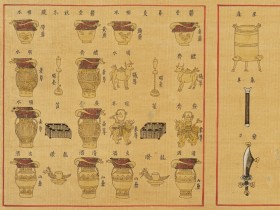 The National Palace Museum of Korea Presents “Butchering Knife for Ritual Offerings” as the Curator’s Choice for MarchThe National Palace Museum of Korea (Director: Kim In Kyu), an affiliate of the Cultural Heritage Administration of Korea, has selected the "Butchering Knife for Ritual Offerings” as its "Curator’s Choice from the Royal Treasures” for the month of March. In addition to being displayed in the Royal Rituals of the Joseon Dynasty Gallery on the basement floor of the museum, it will be presented virtually in a YouTube broadcast on the channels of the Cultural Heritage Administration and the National Palace Museum of Korea starting March 2. * National Palace Museum of Korea YouTube: https://www.youtube.com/gogungmuseum ** Cultural Heritage Administration YouTube: https://www.youtube.com/chluvu The Butchering Knife for Ritual Offerings is a knife that was used for sacrificingthe animals offered at the state rites performed at official venues, including the Jongmyo Shrine. This type of knife is known as a nando in Korean (the first character nan signifies ‘bell.’) Illustrations such as the Folding Screen of Illustrated Instructions for Rites Held at the Royal Ancestral Shrine indicate that sacrificial knives of this type featured three bells on their hilts and one each at the spine and tip. The two examples of this kind of knife housed at the National Palace Museum of Korea have both lost their bells, but the holes through which they were attached are clearly visible. They are made primarily of iron, but one of the knives features a design inlaid in silver on the hilt and the area connecting it to the blade. Cows, pigs, and lambs were slaughtered for rites performed at the Jongmyo Shrine, and their fur, blood, livers, and intestinal fat were offered on a ritual table. The sacrifices presented at rituals were an important part of the rites performed at the Jongmyo Shrine, much so that the king inspected the condition of the offerings prior to the rites that he conducted. Animals were sacrificed only in accordance with strict procedures, and this butchering knife was used on such occasions. The five bells attached to the knife indicated the five notes―gung, sang, gak, chi, and wu―that were recognizedstarting in ancient times. The knife was wielded to sound the bells, and it is said that the animal was cut only when the sounds of the bells struck a harmony. The fur and blood of the sacrificed animal were placed in a wide tray-like ritual vessel known as a mohyeolban. The liver and intestinal fat were set in a vessel known as a gannyodeung after the liver had been rinsed with a ritual liquor known as ulchang. The remaining fur and blood were placed in a clean vessel and carefully buried after the performance of the rite. The Butchering Knife for Ritual Offerings reveals the deep respect offered by descendants towards their ancestors when performing memorial rites. Although there are no restrictions on the number of visitors allowed in the gallery, all visitors to the museum must abide by the requirements in place to reduce any potential spread of COVID-19. Those who are unable to visit the gallery in person can still enjoy this month’s Curator’s Choice virtually through a video with Korean and English subtitles available on the museum’s website (gogung.go.kr) and on the YouTube channels of the museum and of the Cultural Heritage Administration of Korea.
The National Palace Museum of Korea Presents “Butchering Knife for Ritual Offerings” as the Curator’s Choice for MarchThe National Palace Museum of Korea (Director: Kim In Kyu), an affiliate of the Cultural Heritage Administration of Korea, has selected the "Butchering Knife for Ritual Offerings” as its "Curator’s Choice from the Royal Treasures” for the month of March. In addition to being displayed in the Royal Rituals of the Joseon Dynasty Gallery on the basement floor of the museum, it will be presented virtually in a YouTube broadcast on the channels of the Cultural Heritage Administration and the National Palace Museum of Korea starting March 2. * National Palace Museum of Korea YouTube: https://www.youtube.com/gogungmuseum ** Cultural Heritage Administration YouTube: https://www.youtube.com/chluvu The Butchering Knife for Ritual Offerings is a knife that was used for sacrificingthe animals offered at the state rites performed at official venues, including the Jongmyo Shrine. This type of knife is known as a nando in Korean (the first character nan signifies ‘bell.’) Illustrations such as the Folding Screen of Illustrated Instructions for Rites Held at the Royal Ancestral Shrine indicate that sacrificial knives of this type featured three bells on their hilts and one each at the spine and tip. The two examples of this kind of knife housed at the National Palace Museum of Korea have both lost their bells, but the holes through which they were attached are clearly visible. They are made primarily of iron, but one of the knives features a design inlaid in silver on the hilt and the area connecting it to the blade. Cows, pigs, and lambs were slaughtered for rites performed at the Jongmyo Shrine, and their fur, blood, livers, and intestinal fat were offered on a ritual table. The sacrifices presented at rituals were an important part of the rites performed at the Jongmyo Shrine, much so that the king inspected the condition of the offerings prior to the rites that he conducted. Animals were sacrificed only in accordance with strict procedures, and this butchering knife was used on such occasions. The five bells attached to the knife indicated the five notes―gung, sang, gak, chi, and wu―that were recognizedstarting in ancient times. The knife was wielded to sound the bells, and it is said that the animal was cut only when the sounds of the bells struck a harmony. The fur and blood of the sacrificed animal were placed in a wide tray-like ritual vessel known as a mohyeolban. The liver and intestinal fat were set in a vessel known as a gannyodeung after the liver had been rinsed with a ritual liquor known as ulchang. The remaining fur and blood were placed in a clean vessel and carefully buried after the performance of the rite. The Butchering Knife for Ritual Offerings reveals the deep respect offered by descendants towards their ancestors when performing memorial rites. Although there are no restrictions on the number of visitors allowed in the gallery, all visitors to the museum must abide by the requirements in place to reduce any potential spread of COVID-19. Those who are unable to visit the gallery in person can still enjoy this month’s Curator’s Choice virtually through a video with Korean and English subtitles available on the museum’s website (gogung.go.kr) and on the YouTube channels of the museum and of the Cultural Heritage Administration of Korea. -
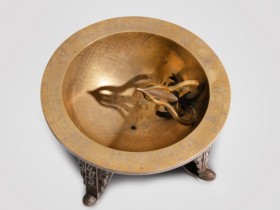 The New Evidence of the Baekje Royal Family’s Funeral Culture in Royal Tombs, Buyeo ConfirmedThe Buyeo National Research Institute of Cultural Heritage (Director: ImSeung-Kyung) has commenced the excavation of the Royal Tomb No.4, Buyeo since the second half of last year. Through this excavation, two potterieswhich illuminate one aspect of the funeral culture of the Baekje period were found. Royal Tombs, Buyeo in maintenance contains six tombs exposed during the Japanese colonial period(1915, 1917) and one tomb discovered during the repair and maintenance work in 1966. However, there are considerable difficulties to apprehend the funeral culture of the Baekje period because of brief research records and a lack of related photos and measured drawings. Especially in the case of Tomb No.4, it has been necessary to re-examined urgently due to the fact that measured drawings were not left and the result of preliminary research that there are quite differences in the size and the location between actual and restored mound. The research showed that Tomb No.4 is a stone chamber tomb with corridor(橫穴式石室墳) which consists of the main chamber(玄室) where the deceased is lying, the tomb entrance tunnel(羨道), and the grave entrance road(墓道). In addition, the mound as upper structure of the tomb remained relatively well, the significant data demonstrating the construction method of the Baekje period’s Royal Tomb. The entire process of the research has been digitally recorded in consideration of future restoration and maintenance. In particular, two buried facilities were firstidentified at the both side of the grave entrance road(墓道). It was confirmed that two potteries were placed upright in the each pit and covered with a flat plate-stone. These facilities are the first case confirmed among Baekje tombs and noted as a critical data related to the funeral culture of the Baekje period. It seems to be a significant evidence to restore ritual process considering the process that the grave entranceroad were dug for buried potteries after its construction. Furthermore, since revealing the filled contents of the potteries has been considered as an important clue to identifying a ritual process of the time, the institution is collaborating with Conservation Science Center in the National Research Institute of Cultural Heritage for conducting an analysis of organic matter from the soil accumulated inside the potteries. In the face of a lack of historical materials, the buried potteries are critical material that can reveal the funeral culture of Sabi period in Baekje. Meanwhile, from March of this year, excavation survey of Tomb No.3(Seohachong) will be promoted. It is noticed that like Tomb No.4, there are differences about the size and the location between the actual and the currently maintained onein Tomb No.3. That is why this excavation will be needed to make an accurate maintenance and restoration plan. Since Tomb no.3 is located adjacent to the south side of Tomb No.4, which was investigated last year, it is expected that critical results will be derived in understanding the geographical conditions of the tumuli and the order of construction in Royal Toms, Buyeo The Buyeo National Institute of Cultural Heritage intends to recover the status of Royal Toms of Sabi period in Baekje through systemic excavation and research of Royal Toms, Buyeo. Furthermore, in order to adjust the correct size and location of the mound that had been over-represented, the institute plans to prepare maintenance and restoration plan for Royal Tombs that fully reflects the latest research and its results. Not only that, it is also planned that the site, Tomb No.3 and Tomb No.4 in excavation will be open to the public while the entire process of investigation will be shared to the public by producing a video, so that the investigation results could be promptly disclosed.
The New Evidence of the Baekje Royal Family’s Funeral Culture in Royal Tombs, Buyeo ConfirmedThe Buyeo National Research Institute of Cultural Heritage (Director: ImSeung-Kyung) has commenced the excavation of the Royal Tomb No.4, Buyeo since the second half of last year. Through this excavation, two potterieswhich illuminate one aspect of the funeral culture of the Baekje period were found. Royal Tombs, Buyeo in maintenance contains six tombs exposed during the Japanese colonial period(1915, 1917) and one tomb discovered during the repair and maintenance work in 1966. However, there are considerable difficulties to apprehend the funeral culture of the Baekje period because of brief research records and a lack of related photos and measured drawings. Especially in the case of Tomb No.4, it has been necessary to re-examined urgently due to the fact that measured drawings were not left and the result of preliminary research that there are quite differences in the size and the location between actual and restored mound. The research showed that Tomb No.4 is a stone chamber tomb with corridor(橫穴式石室墳) which consists of the main chamber(玄室) where the deceased is lying, the tomb entrance tunnel(羨道), and the grave entrance road(墓道). In addition, the mound as upper structure of the tomb remained relatively well, the significant data demonstrating the construction method of the Baekje period’s Royal Tomb. The entire process of the research has been digitally recorded in consideration of future restoration and maintenance. In particular, two buried facilities were firstidentified at the both side of the grave entrance road(墓道). It was confirmed that two potteries were placed upright in the each pit and covered with a flat plate-stone. These facilities are the first case confirmed among Baekje tombs and noted as a critical data related to the funeral culture of the Baekje period. It seems to be a significant evidence to restore ritual process considering the process that the grave entranceroad were dug for buried potteries after its construction. Furthermore, since revealing the filled contents of the potteries has been considered as an important clue to identifying a ritual process of the time, the institution is collaborating with Conservation Science Center in the National Research Institute of Cultural Heritage for conducting an analysis of organic matter from the soil accumulated inside the potteries. In the face of a lack of historical materials, the buried potteries are critical material that can reveal the funeral culture of Sabi period in Baekje. Meanwhile, from March of this year, excavation survey of Tomb No.3(Seohachong) will be promoted. It is noticed that like Tomb No.4, there are differences about the size and the location between the actual and the currently maintained onein Tomb No.3. That is why this excavation will be needed to make an accurate maintenance and restoration plan. Since Tomb no.3 is located adjacent to the south side of Tomb No.4, which was investigated last year, it is expected that critical results will be derived in understanding the geographical conditions of the tumuli and the order of construction in Royal Toms, Buyeo The Buyeo National Institute of Cultural Heritage intends to recover the status of Royal Toms of Sabi period in Baekje through systemic excavation and research of Royal Toms, Buyeo. Furthermore, in order to adjust the correct size and location of the mound that had been over-represented, the institute plans to prepare maintenance and restoration plan for Royal Tombs that fully reflects the latest research and its results. Not only that, it is also planned that the site, Tomb No.3 and Tomb No.4 in excavation will be open to the public while the entire process of investigation will be shared to the public by producing a video, so that the investigation results could be promptly disclosed. -
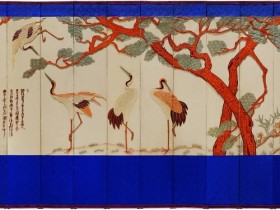 The National Palace Museum of Korea Presents Folding Screen Embroidered with Pine Tree and Crane Design as the Curator’s Choice for FebruaryThe National Palace Museum of Korea (Director: Kim In Kyu), an affiliate of the Cultural Heritage Administration of Korea, has selected Folding Screen Embroidered with Pine Tree and Crane Design as its "Curator’s Choice from the Royal Treasures” for the month of February. In addition to being displayed in the Korean Empire gallery on the first floor of the museum, it will be presented virtually in a YouTube broadcast on the channels of the Cultural Heritage Administration and the National Palace Museum of Korea starting February 3. This embroidered folding screen was used to decorate interior spaces within the Korean imperial court. It was modeled on a painting by an artist named Yang Gi-hun (1843?1911), who was active in the late Joseon Dynasty and Korean Empire period and was renowned for his paintings on the reeds-and-geese theme. The ninth and tenth panels feature a poem and a type of inscription known as a gwanseo* reading "臣浿江老漁楊基薰敬寫” (meaning, painted respectfully by your subject, Yang Gi-hun (sobriquet: Paegangnoeo)). This indicates that the screen was provided as tribute to Emperor Gojong (r. 1863?1907). A gwanseo inscription and seals of the artist are unique features of court paintings produced during the Korean Empire period. They demonstrate the change from court paintings being produced by the Dohwaseo (Royal Bureau of Painting) to procurement by direct commission or tribute from freelance artists following the abolition of the bureau in 1894. The embroidery on this screen reflects the characteristics of anjusu, the embroidery style of the Anju region in Pyongan-do Province (in present day North Korea). This also illustrates the changes that had taken place in the way that goods were procured for use in the royal court. The production of embroidered goods for the Joseon royal court had been the exclusive responsibility of court women in the Subang (Embroidery Room). However, distinctive local embroidery styles developed in the provincesaround the late nineteenth to twentieth century. Works of embroidery began to be distributed throughout the nation and were eventually introduced to the imperial court in large quantities.Anjusu is one example, and it is known that the Korean imperial court commissioned or received as tribute embroidered folding screens through the local government office in Pyongan-do Province. Moreover, there are photographs of the Korean imperial court with anjusu folding screens in the background, further demonstrating their presence in the court. Although there are no restrictions on the number of visitors allowed in the gallery, all visitors to the museum must abide by the requirements in place to reduce any potential spread of COVID-19. Those who are unable to visit the gallery in person can still enjoy this month’s Curator’s Choice virtually through a video with Korean and English subtitles available on the museum’s website (gogung.go.kr) and on the YouTube channels of the museum and of the Cultural Heritage Administration of Korea.
The National Palace Museum of Korea Presents Folding Screen Embroidered with Pine Tree and Crane Design as the Curator’s Choice for FebruaryThe National Palace Museum of Korea (Director: Kim In Kyu), an affiliate of the Cultural Heritage Administration of Korea, has selected Folding Screen Embroidered with Pine Tree and Crane Design as its "Curator’s Choice from the Royal Treasures” for the month of February. In addition to being displayed in the Korean Empire gallery on the first floor of the museum, it will be presented virtually in a YouTube broadcast on the channels of the Cultural Heritage Administration and the National Palace Museum of Korea starting February 3. This embroidered folding screen was used to decorate interior spaces within the Korean imperial court. It was modeled on a painting by an artist named Yang Gi-hun (1843?1911), who was active in the late Joseon Dynasty and Korean Empire period and was renowned for his paintings on the reeds-and-geese theme. The ninth and tenth panels feature a poem and a type of inscription known as a gwanseo* reading "臣浿江老漁楊基薰敬寫” (meaning, painted respectfully by your subject, Yang Gi-hun (sobriquet: Paegangnoeo)). This indicates that the screen was provided as tribute to Emperor Gojong (r. 1863?1907). A gwanseo inscription and seals of the artist are unique features of court paintings produced during the Korean Empire period. They demonstrate the change from court paintings being produced by the Dohwaseo (Royal Bureau of Painting) to procurement by direct commission or tribute from freelance artists following the abolition of the bureau in 1894. The embroidery on this screen reflects the characteristics of anjusu, the embroidery style of the Anju region in Pyongan-do Province (in present day North Korea). This also illustrates the changes that had taken place in the way that goods were procured for use in the royal court. The production of embroidered goods for the Joseon royal court had been the exclusive responsibility of court women in the Subang (Embroidery Room). However, distinctive local embroidery styles developed in the provincesaround the late nineteenth to twentieth century. Works of embroidery began to be distributed throughout the nation and were eventually introduced to the imperial court in large quantities.Anjusu is one example, and it is known that the Korean imperial court commissioned or received as tribute embroidered folding screens through the local government office in Pyongan-do Province. Moreover, there are photographs of the Korean imperial court with anjusu folding screens in the background, further demonstrating their presence in the court. Although there are no restrictions on the number of visitors allowed in the gallery, all visitors to the museum must abide by the requirements in place to reduce any potential spread of COVID-19. Those who are unable to visit the gallery in person can still enjoy this month’s Curator’s Choice virtually through a video with Korean and English subtitles available on the museum’s website (gogung.go.kr) and on the YouTube channels of the museum and of the Cultural Heritage Administration of Korea. -
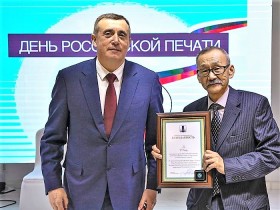 On the Russian Press Day, the New Korea Newspaper Lee Ye-sik received the Contribution Award for Photojournalist.Sakhalin photographer Ye-sik Lee (photo reporter for Saekoryo Shimbun) received the Achievement Award from Governor Valery Limarenko of Sakhalin on the Russian Press Day. According to the president of Sakhalin Saekory Shimbun Bae Wiktoria, "Reporter Ye-sik Lee has been working as a photographer for the Sakhalin Newspaper since 1989." Reporter Lee Ye-sik is a second-generation Korean born in Sakhalin in 1949. His father was brought to Sakhalin for forced labor in 1943. After graduating from university in Sakhalin, he has been working as a freelance photographer since 1973. Since 2002, he has held five photo exhibitions in Seoul and Sapporo, Japan, and has been introducing works focusing on the lives of Sakhalin compatriots through solo exhibitions in Sakhalin. In addition to the exhibition five years ago, Lee Ye-sik's photo book 'Return' (Nunbit Publishing Company) was released. Reporter Lee Ye-sik said, "I've been thinking about publishing a photo book for many years, but I'm so happy to have my first photo book with this exhibition." Born in Sakhalin, Lee Ye-sik is an artist representing Koreans in Sakhalin, which contains the lives and fields of Sakhalin compatriots for more than 50 years from the days of freelance. The biography of Professor Yesik Lee is as follows. Lee E-Sik Born 1949 in Makarov, Sakhalin Graduated from Sakhalin Wafurushevo High School He studied at Novosibirsk University of Architecture and Communication, He taught drafting at the Sakhalin Yuzhno-Sakhalinsk Technical School. Freelance photojournalist in the Sakhalin state press since 1973 1989-Present working as a photojournalist for the New Korea Newspaper 1997 Chekhov Prize. International Internet site photo contest award 2002 Solo exhibition in Seoul, Korea and Sapporo, Japan 2003 Solo exhibition on the theme of "Korean Life in Sakhalin" in Osaka, Japan Solo exhibition in Yuzhno-Sakhalinsk, Sakhalin, 2003-2009 2017 Lee Ye-sik photo exhibition 'Return' (Busan 40-Step Cultural Center Exhibition Room) 2018 Lee Ye-sik Photo Exhibition (Sakhalin History Museum)
On the Russian Press Day, the New Korea Newspaper Lee Ye-sik received the Contribution Award for Photojournalist.Sakhalin photographer Ye-sik Lee (photo reporter for Saekoryo Shimbun) received the Achievement Award from Governor Valery Limarenko of Sakhalin on the Russian Press Day. According to the president of Sakhalin Saekory Shimbun Bae Wiktoria, "Reporter Ye-sik Lee has been working as a photographer for the Sakhalin Newspaper since 1989." Reporter Lee Ye-sik is a second-generation Korean born in Sakhalin in 1949. His father was brought to Sakhalin for forced labor in 1943. After graduating from university in Sakhalin, he has been working as a freelance photographer since 1973. Since 2002, he has held five photo exhibitions in Seoul and Sapporo, Japan, and has been introducing works focusing on the lives of Sakhalin compatriots through solo exhibitions in Sakhalin. In addition to the exhibition five years ago, Lee Ye-sik's photo book 'Return' (Nunbit Publishing Company) was released. Reporter Lee Ye-sik said, "I've been thinking about publishing a photo book for many years, but I'm so happy to have my first photo book with this exhibition." Born in Sakhalin, Lee Ye-sik is an artist representing Koreans in Sakhalin, which contains the lives and fields of Sakhalin compatriots for more than 50 years from the days of freelance. The biography of Professor Yesik Lee is as follows. Lee E-Sik Born 1949 in Makarov, Sakhalin Graduated from Sakhalin Wafurushevo High School He studied at Novosibirsk University of Architecture and Communication, He taught drafting at the Sakhalin Yuzhno-Sakhalinsk Technical School. Freelance photojournalist in the Sakhalin state press since 1973 1989-Present working as a photojournalist for the New Korea Newspaper 1997 Chekhov Prize. International Internet site photo contest award 2002 Solo exhibition in Seoul, Korea and Sapporo, Japan 2003 Solo exhibition on the theme of "Korean Life in Sakhalin" in Osaka, Japan Solo exhibition in Yuzhno-Sakhalinsk, Sakhalin, 2003-2009 2017 Lee Ye-sik photo exhibition 'Return' (Busan 40-Step Cultural Center Exhibition Room) 2018 Lee Ye-sik Photo Exhibition (Sakhalin History Museum) -
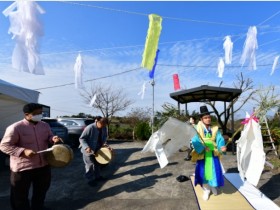 'Jeju Keungut’ To Become National Intangible Cultural HeritageThe Cultural Heritage Administration (Administrator Kim Hyun-mo) plans to designate Jeju Keungut, the grandest shamanistic ritual in Jeju, as the National Intangible Cultural Heritage. Jeju Keungut, also known as Jeju Grand Gut, is the shamanistic ceremony that has been passed down for the longest period in Jeju Island. It encompasses traditional music, dance and game as well as the history of the people of Jeju. It is usually conducted by more than five people ? including the leading simbang, or shaman ? and continues for 7 to 14 days.* simbang - shaman in Jeju dialect Jeju Keungut has a long history and as a result maintains the original format of Korean gut. It consists of music, dance, oral epics and games indigenous to Jeju, which makes it a highly valuable subject of study. Experts also note its format: It begins with a ritual of inviting gods and bringing them to a special seating area; and progresses in stages like yeongsin, osin, songsin, consecutively. The shaman’s narrative song, yeoldu bonpuri, reflects the views of the Jeju people on creation, life and death. It is also notable how the shaman’s narrative uses the Jeju dialect from a long time ago. Linguists note how it is tantamount to a dictionary of Jeju dialect and thus, an invaluable source for their research. * yeongsin - Shaman receives and guides gods, before starting gut* osin ? Shaman entertains by giving praise to gods with dances and songs* songsin ? Shaman concludes gut and sends off gods* yeoldu bonpuri ? Shaman sits in front of an ancestral ritual table and introduces gods by reciting the account of their histories. There are several well-known examples like ‘cheonjiwang bonpuri’, ‘chogong bonpuri’, ‘yigong bonpuri’, ‘samgong bonpuri.’ Jeju Keungut Preservation Society (Director Seo Soon-sil), the group that has been preserving this gut ritual, will also be acknowledged in the designation. Established in 2012, the society has the capabilities to reenact the Jeju Keungut in its original form, and has been continuously dedicated to passing down the Jeju Keungut to people today. It has been more than 40 years since a Jeju gut ritual that embodies the joy, sorrow and life of the Jeju people has been designated as a national intangible heritage item. In November of 1980, Jeju Chilmeoridang Yeongdeunggut was recognized as a national intangible heritage item in Korea. * Jeju Chilmeoridang Yeongdeunggut(Fishing village’s shaman ritual, Jeju Island) - a ritual held at Chilmeoridang in the village of Gun-rip to pray for calm seas and a plentiful sea catch. It was inscribed on UNESCO’s Representative List of the Intangible Cultural Heritage of Humanity in 2009. The Cultural Heritage Administration plans to continue to expand the scope of protection through the designation of new national cultural properties so that our traditional culture can be passed down to future generations. <시왕맞이(시왕[十王]을 맞이하여 기원하는 의례)(출처 제주특별자치도청)>
'Jeju Keungut’ To Become National Intangible Cultural HeritageThe Cultural Heritage Administration (Administrator Kim Hyun-mo) plans to designate Jeju Keungut, the grandest shamanistic ritual in Jeju, as the National Intangible Cultural Heritage. Jeju Keungut, also known as Jeju Grand Gut, is the shamanistic ceremony that has been passed down for the longest period in Jeju Island. It encompasses traditional music, dance and game as well as the history of the people of Jeju. It is usually conducted by more than five people ? including the leading simbang, or shaman ? and continues for 7 to 14 days.* simbang - shaman in Jeju dialect Jeju Keungut has a long history and as a result maintains the original format of Korean gut. It consists of music, dance, oral epics and games indigenous to Jeju, which makes it a highly valuable subject of study. Experts also note its format: It begins with a ritual of inviting gods and bringing them to a special seating area; and progresses in stages like yeongsin, osin, songsin, consecutively. The shaman’s narrative song, yeoldu bonpuri, reflects the views of the Jeju people on creation, life and death. It is also notable how the shaman’s narrative uses the Jeju dialect from a long time ago. Linguists note how it is tantamount to a dictionary of Jeju dialect and thus, an invaluable source for their research. * yeongsin - Shaman receives and guides gods, before starting gut* osin ? Shaman entertains by giving praise to gods with dances and songs* songsin ? Shaman concludes gut and sends off gods* yeoldu bonpuri ? Shaman sits in front of an ancestral ritual table and introduces gods by reciting the account of their histories. There are several well-known examples like ‘cheonjiwang bonpuri’, ‘chogong bonpuri’, ‘yigong bonpuri’, ‘samgong bonpuri.’ Jeju Keungut Preservation Society (Director Seo Soon-sil), the group that has been preserving this gut ritual, will also be acknowledged in the designation. Established in 2012, the society has the capabilities to reenact the Jeju Keungut in its original form, and has been continuously dedicated to passing down the Jeju Keungut to people today. It has been more than 40 years since a Jeju gut ritual that embodies the joy, sorrow and life of the Jeju people has been designated as a national intangible heritage item. In November of 1980, Jeju Chilmeoridang Yeongdeunggut was recognized as a national intangible heritage item in Korea. * Jeju Chilmeoridang Yeongdeunggut(Fishing village’s shaman ritual, Jeju Island) - a ritual held at Chilmeoridang in the village of Gun-rip to pray for calm seas and a plentiful sea catch. It was inscribed on UNESCO’s Representative List of the Intangible Cultural Heritage of Humanity in 2009. The Cultural Heritage Administration plans to continue to expand the scope of protection through the designation of new national cultural properties so that our traditional culture can be passed down to future generations. <시왕맞이(시왕[十王]을 맞이하여 기원하는 의례)(출처 제주특별자치도청)> -
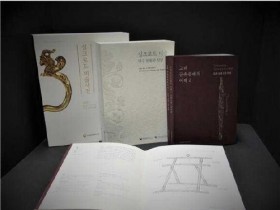 National Research Institute of Cultural Heritage has published three books on the research results of Goryeo metalworks and Silk Road artThe National Research Institute of Cultural Heritage (NRICH; JI Byongmok, Director General) of the Cultural Heritage Administration has published three books - Understanding the Goryeo Metalwork 2, Encyclopedia of the Silk Road Western Region: Central Asia (Western Turkestan),and The Art of Silk Road: New Research Trends and Perspective. Understanding the Goryeo Metalwork 2 is the sequel to Understanding the Goryeo Metalwork published in 2020. This edition features a collection of 130 household crafts from the Goryeo Dynasty. There have been few remaining relics or documentary records that are seldom available for viewing. The book features small knives, needle case, makeup brushes, and other miscellaneous personnel objects used by the Goryeo people, as well as accessories such as bracelets and hairpins. For an easy and accurate understanding of these artifacts, detailed names, terms, and uses are provided along with drawings and pictures.*needle case: A cylindrical case to keep needles Encyclopedia of the Silk Road Western Region: Central Asia (Western Turkestan) is a follow-up study to Encyclopedia of the Silk Road Eastern Region: Xinjiang of China published in 2019. While the earlier publication deals with the eastern part of the Pamir Plateau, this volume covers its western part - Central Asia and a part of West Asia. The book contains 33 thematic studies on various subjects encompassing history, religion, Buddhist art, and crafts of this region where research has been challenged by limited access to the relics and materials. For over three years since 2018, NRICH and experts in related fields have compiled domestic and foreign research results and arranged photos, maps, lists of plates, and references to enable easy understanding.* Pamir Plateau: A plateau in Central Asia spanning Tajikistan, China, India, Pakistan and Afghanistan. The Art of Silk Road: New Research Trends and Perspectivecontains six different articles onSilk Road art in Central Asia, written by the world renowned scholars from the U.S., Germany, Italy, and Japan. This book, published in both Korean and English, intends to publicize the latest international research results on Silk Road art at home and abroad. These volumes will be distributed to domestic and overseas public libraries and related research institutes. E-books will also be available on the official website of the Cultural Heritage Administration (www.cha.go.kr) and the NRICH Cultural Heritage Research Knowledge website (www.nrich.co.kr) for public viewing. NRICH will continue to strive in earnest to conduct research on artistic heritage and disseminate them at home and abroad for stimulatingworldwide public interest in Korean cultural heritage.
National Research Institute of Cultural Heritage has published three books on the research results of Goryeo metalworks and Silk Road artThe National Research Institute of Cultural Heritage (NRICH; JI Byongmok, Director General) of the Cultural Heritage Administration has published three books - Understanding the Goryeo Metalwork 2, Encyclopedia of the Silk Road Western Region: Central Asia (Western Turkestan),and The Art of Silk Road: New Research Trends and Perspective. Understanding the Goryeo Metalwork 2 is the sequel to Understanding the Goryeo Metalwork published in 2020. This edition features a collection of 130 household crafts from the Goryeo Dynasty. There have been few remaining relics or documentary records that are seldom available for viewing. The book features small knives, needle case, makeup brushes, and other miscellaneous personnel objects used by the Goryeo people, as well as accessories such as bracelets and hairpins. For an easy and accurate understanding of these artifacts, detailed names, terms, and uses are provided along with drawings and pictures.*needle case: A cylindrical case to keep needles Encyclopedia of the Silk Road Western Region: Central Asia (Western Turkestan) is a follow-up study to Encyclopedia of the Silk Road Eastern Region: Xinjiang of China published in 2019. While the earlier publication deals with the eastern part of the Pamir Plateau, this volume covers its western part - Central Asia and a part of West Asia. The book contains 33 thematic studies on various subjects encompassing history, religion, Buddhist art, and crafts of this region where research has been challenged by limited access to the relics and materials. For over three years since 2018, NRICH and experts in related fields have compiled domestic and foreign research results and arranged photos, maps, lists of plates, and references to enable easy understanding.* Pamir Plateau: A plateau in Central Asia spanning Tajikistan, China, India, Pakistan and Afghanistan. The Art of Silk Road: New Research Trends and Perspectivecontains six different articles onSilk Road art in Central Asia, written by the world renowned scholars from the U.S., Germany, Italy, and Japan. This book, published in both Korean and English, intends to publicize the latest international research results on Silk Road art at home and abroad. These volumes will be distributed to domestic and overseas public libraries and related research institutes. E-books will also be available on the official website of the Cultural Heritage Administration (www.cha.go.kr) and the NRICH Cultural Heritage Research Knowledge website (www.nrich.co.kr) for public viewing. NRICH will continue to strive in earnest to conduct research on artistic heritage and disseminate them at home and abroad for stimulatingworldwide public interest in Korean cultural heritage. -
![[학술]‘디지털 전환시대의 문화유산’ 국제 학술토론회 개최](https://www.kukak21.com/data/file/news/thumb-3534942082_19Eqg3Dd_87f224422a5cfd530df7d02d8c6a72975e5b10cb_280x210.jpg) [학술]‘디지털 전환시대의 문화유산’ 국제 학술토론회 개최문화재청은 한국과학기술원(KAIST) 문화기술대학원 디지털 헤리티지 랩(Digital Heritage Lab)과 함께 오는 12월 3일부터 4일까지 국립고궁박물관 별관 강당에서 ‘디지털 전환, 그 다음: 디지털 유산의 영역을 넓히다(Next Digital Transformation: Broadening the Territory of Digital Heritage)’라는 주제로 「2020 디지털 문화유산 국제 심포지엄」을 개최한다. 올해로 두 번째를 맞는 '디지털 문화유산 국제 심포지엄'은 디지털 기술을 적용한 국내외 문화유산 기록, 보존, 관리, 해석, 공유, 활용관련 사례를 공유하고, 전문가 협력을 통한 발전방안을 모색하기 위해 문화재청이 개최하는 연례회의다. 올해는 코로나19 상황으로 인해 온라인 웨비나 형식으로 개최하고, 유튜브 채널 생중계(https://bit.ly/3fqvcVr)를 통해 한국어-영어 동시통역으로 실시간 중계한다. * 웹(Web)과 세미나(seminar)의 합성어인 ‘웨비나’는 일반적으로 인터넷이 연결된 컴퓨터와 마이크나 전화를 이용해 강사와 참석자 간에 실시간, 양방향으로 진행함 4차 산업혁명과 DNA(Data, Network, AI)로 대표되는 디지털 기술의 혁신적 발전은 기존 아날로그 방식의 문화유산 정책 전반에 대한 디지털 시대로 대전환(Digital Transformation)을 하고 있다. 문화유산 역시 보존관리와 활용 분야에서 디지털 문화유산의 역할이 나날이 확대되어 가고 있다. 이에 따라, 올해는 세부 주제도 역사적 기념물과 박물관, 문화유산과 주변 환경의 가치 연결, 자연유산, 해양 고고학 등 범주를 다양하게 구성하였으며 국내를 포함해 9개국에서 모인 16명의 전문가가 발표와 토론을 펼칠 계획이다. 특히, 코로나19 위기로 사회 전반이 대전환을 맞고 있는 현 시점에 디지털 문화유산의 역할, 가치 재탐색, 발전가능성 등에 대한 논의는 꼭 필요하기에 행사의 의미가 더욱 특별하다. 심포지엄은 국제기념물유적협의회(ICOMOS) CIPA 회장이자 그리스 테살로니키 아리스토텔레스 대학 연구 부총장인 스트라토스 스틸리아니디스의 ‘팬데믹 시대의 문화유산 기록 및 기록화’와 한국과학기술원 문화기술대학원 우운택 학과장의 ‘디지털 트윈 연동 가상증강현실의 활용 가능성’ 등 2개의 기조발제로 시작한다. 첫 부문은 ‘디지털 기록화: 문화유산 기록화 영역과 인식의 확장’을 주제로, ▲ 자연유산의 3차원(3D) 기록화를 위한 가이드라인 설립을 위하여(안재홍, 한국과학기술원 문화기술대학원 초빙교수), ▲ 해양유산, 해양 고고학 분야의 디지털 기록화(드미트리오스 스칼라토스, 사이프러스 공대 교수), ▲ 세계자연유산, 제주, 디지털 기록으로 남기다 (정승호, 국립문화재연구소 학예연구사) 등 자연유산과 해양유산을 과학적으로 기록하는 방법과 의미에 대해 발표한다. 두 번째 부문은 ‘디지털 기록화: 역사유적과 주변환경의 가치 연결’을 주제로 ▲ 유네스코 세계유산 실크로드 유적을 중심으로 대규모 문화유적의 디지털 기록화 방법(드미트리 보야킨, 우즈베키스탄 중앙아시아학연구소장), ▲ 록다운 시대 우리 유산의 보존을 위한 디지털 기술의 활용(ICOMOS 부회장, 마리오 산타나 퀸테로, 캐나다 칼튼 대학 교수), ▲ 문화유산 3차원 데이터베이스(DB) 구축 및 활용(최연규, 문화재청 정보화담당관실) 등 대규모 역사적 기념물에 대한 디지털 기록과 복원, 콘텐츠 활용사례에 대해 발표한다. 세 번째 부문은 ‘디지털 기록화: 유산의 해석과 활용을 위한 원천자원’을 주제로, ▲ 디지털 유산의 개입: 접근이 제한되거나 파괴된 건축물의 가치회복(피에르 알로, 벨기에 리에쥬 대학 교수), ▲ 박물관에서 디지털 유산 자원의 활용(모나 헤스, 독일 밤베르크 대학 교수), ▲ 문화유산, 실감콘텐츠, 박물관 ? 무엇을 준비할 것인가?(장은정, 국립중앙박물관) 등 문화유산의 가치해석 및 박물관의 실감콘텐츠 제작과 활용방법에 대해 발표한다.
[학술]‘디지털 전환시대의 문화유산’ 국제 학술토론회 개최문화재청은 한국과학기술원(KAIST) 문화기술대학원 디지털 헤리티지 랩(Digital Heritage Lab)과 함께 오는 12월 3일부터 4일까지 국립고궁박물관 별관 강당에서 ‘디지털 전환, 그 다음: 디지털 유산의 영역을 넓히다(Next Digital Transformation: Broadening the Territory of Digital Heritage)’라는 주제로 「2020 디지털 문화유산 국제 심포지엄」을 개최한다. 올해로 두 번째를 맞는 '디지털 문화유산 국제 심포지엄'은 디지털 기술을 적용한 국내외 문화유산 기록, 보존, 관리, 해석, 공유, 활용관련 사례를 공유하고, 전문가 협력을 통한 발전방안을 모색하기 위해 문화재청이 개최하는 연례회의다. 올해는 코로나19 상황으로 인해 온라인 웨비나 형식으로 개최하고, 유튜브 채널 생중계(https://bit.ly/3fqvcVr)를 통해 한국어-영어 동시통역으로 실시간 중계한다. * 웹(Web)과 세미나(seminar)의 합성어인 ‘웨비나’는 일반적으로 인터넷이 연결된 컴퓨터와 마이크나 전화를 이용해 강사와 참석자 간에 실시간, 양방향으로 진행함 4차 산업혁명과 DNA(Data, Network, AI)로 대표되는 디지털 기술의 혁신적 발전은 기존 아날로그 방식의 문화유산 정책 전반에 대한 디지털 시대로 대전환(Digital Transformation)을 하고 있다. 문화유산 역시 보존관리와 활용 분야에서 디지털 문화유산의 역할이 나날이 확대되어 가고 있다. 이에 따라, 올해는 세부 주제도 역사적 기념물과 박물관, 문화유산과 주변 환경의 가치 연결, 자연유산, 해양 고고학 등 범주를 다양하게 구성하였으며 국내를 포함해 9개국에서 모인 16명의 전문가가 발표와 토론을 펼칠 계획이다. 특히, 코로나19 위기로 사회 전반이 대전환을 맞고 있는 현 시점에 디지털 문화유산의 역할, 가치 재탐색, 발전가능성 등에 대한 논의는 꼭 필요하기에 행사의 의미가 더욱 특별하다. 심포지엄은 국제기념물유적협의회(ICOMOS) CIPA 회장이자 그리스 테살로니키 아리스토텔레스 대학 연구 부총장인 스트라토스 스틸리아니디스의 ‘팬데믹 시대의 문화유산 기록 및 기록화’와 한국과학기술원 문화기술대학원 우운택 학과장의 ‘디지털 트윈 연동 가상증강현실의 활용 가능성’ 등 2개의 기조발제로 시작한다. 첫 부문은 ‘디지털 기록화: 문화유산 기록화 영역과 인식의 확장’을 주제로, ▲ 자연유산의 3차원(3D) 기록화를 위한 가이드라인 설립을 위하여(안재홍, 한국과학기술원 문화기술대학원 초빙교수), ▲ 해양유산, 해양 고고학 분야의 디지털 기록화(드미트리오스 스칼라토스, 사이프러스 공대 교수), ▲ 세계자연유산, 제주, 디지털 기록으로 남기다 (정승호, 국립문화재연구소 학예연구사) 등 자연유산과 해양유산을 과학적으로 기록하는 방법과 의미에 대해 발표한다. 두 번째 부문은 ‘디지털 기록화: 역사유적과 주변환경의 가치 연결’을 주제로 ▲ 유네스코 세계유산 실크로드 유적을 중심으로 대규모 문화유적의 디지털 기록화 방법(드미트리 보야킨, 우즈베키스탄 중앙아시아학연구소장), ▲ 록다운 시대 우리 유산의 보존을 위한 디지털 기술의 활용(ICOMOS 부회장, 마리오 산타나 퀸테로, 캐나다 칼튼 대학 교수), ▲ 문화유산 3차원 데이터베이스(DB) 구축 및 활용(최연규, 문화재청 정보화담당관실) 등 대규모 역사적 기념물에 대한 디지털 기록과 복원, 콘텐츠 활용사례에 대해 발표한다. 세 번째 부문은 ‘디지털 기록화: 유산의 해석과 활용을 위한 원천자원’을 주제로, ▲ 디지털 유산의 개입: 접근이 제한되거나 파괴된 건축물의 가치회복(피에르 알로, 벨기에 리에쥬 대학 교수), ▲ 박물관에서 디지털 유산 자원의 활용(모나 헤스, 독일 밤베르크 대학 교수), ▲ 문화유산, 실감콘텐츠, 박물관 ? 무엇을 준비할 것인가?(장은정, 국립중앙박물관) 등 문화유산의 가치해석 및 박물관의 실감콘텐츠 제작과 활용방법에 대해 발표한다. -
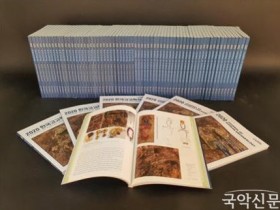 '2020 한국고고학저널' 국·영문판 발간올해 한국고고학의 주요 발굴 조사 성과를 담은 책 ‘2020 한국고고학저널’ 국·영문판이 나왔다.국립문화재연구소는 발굴 조사하는 많은 유적 가운데 학술적으로 중요한 유적들을 별도로 모아 매년 '한국고고학저널'을 발간하고 있다. 올해 '한국고고학저널'은 2020년 학계와 언론의 주목을 받았던 유적 29곳에 대한 조사 내용과 성과를 수록했다.이 책에는 구석기 시대 순천 월평 유적부터 조선 시대 충주 읍성까지 각 시대 대표 유적에 대한 발굴조사 성과가 담겼다. 경주 월성 해자에서 출토한 유물을 이용한 고환경 복원 연구와 2020년에 새로 개설한 국립문화재연구소 문화재분석정보센터는 기획으로 다뤘다.발굴 조사 현장과 내용을 담은 영상을 온라인으로 볼 수 있는 QR코드도 실려 있다. 연구소는 이 책자를 국내외 국공립 도서관과 국외 연구기관 등에 배포하고 연구소 웹사이트에도 공개할 예정이다.
'2020 한국고고학저널' 국·영문판 발간올해 한국고고학의 주요 발굴 조사 성과를 담은 책 ‘2020 한국고고학저널’ 국·영문판이 나왔다.국립문화재연구소는 발굴 조사하는 많은 유적 가운데 학술적으로 중요한 유적들을 별도로 모아 매년 '한국고고학저널'을 발간하고 있다. 올해 '한국고고학저널'은 2020년 학계와 언론의 주목을 받았던 유적 29곳에 대한 조사 내용과 성과를 수록했다.이 책에는 구석기 시대 순천 월평 유적부터 조선 시대 충주 읍성까지 각 시대 대표 유적에 대한 발굴조사 성과가 담겼다. 경주 월성 해자에서 출토한 유물을 이용한 고환경 복원 연구와 2020년에 새로 개설한 국립문화재연구소 문화재분석정보센터는 기획으로 다뤘다.발굴 조사 현장과 내용을 담은 영상을 온라인으로 볼 수 있는 QR코드도 실려 있다. 연구소는 이 책자를 국내외 국공립 도서관과 국외 연구기관 등에 배포하고 연구소 웹사이트에도 공개할 예정이다.


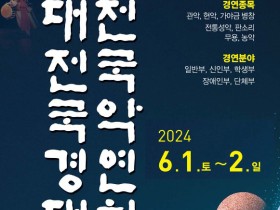
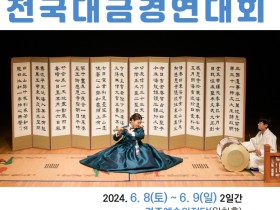

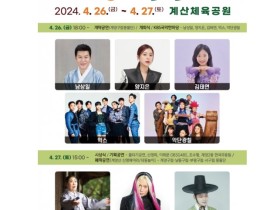
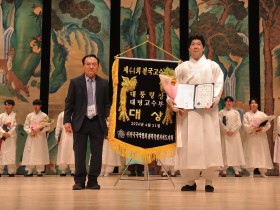

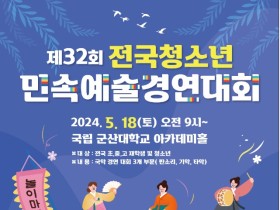
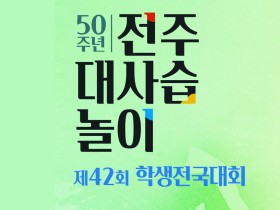


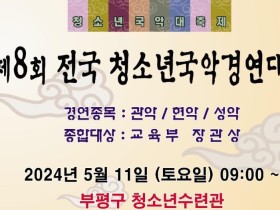
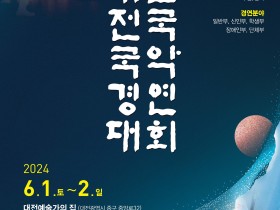
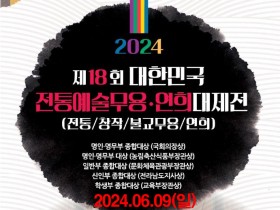
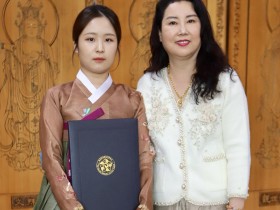
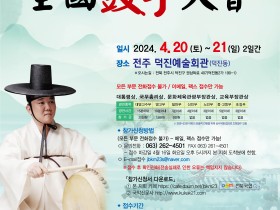
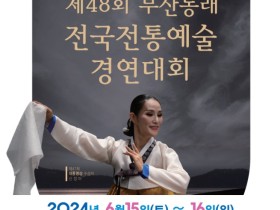
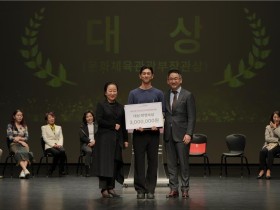
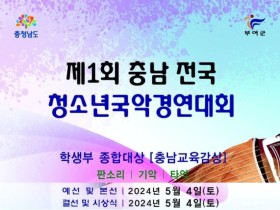
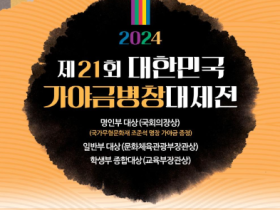
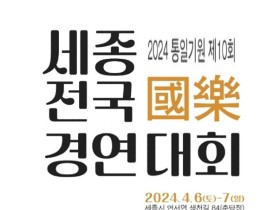
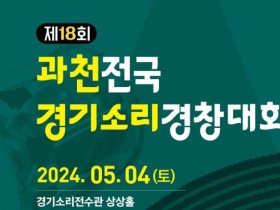
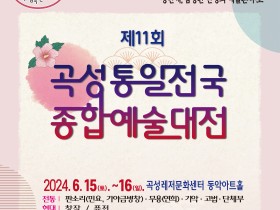
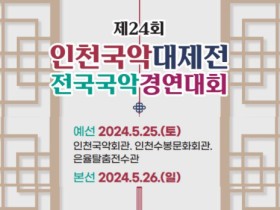
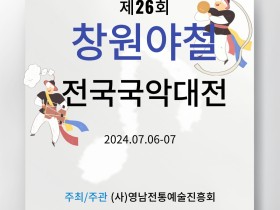
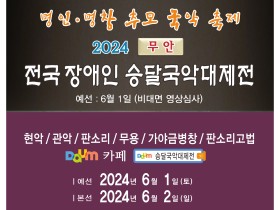
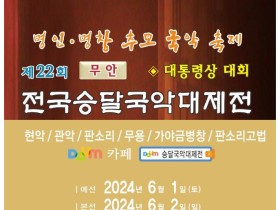
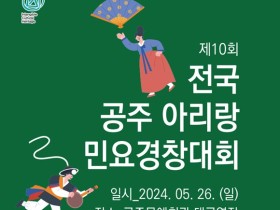
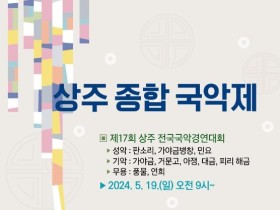
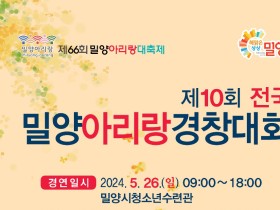
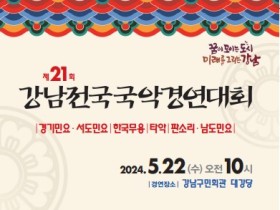
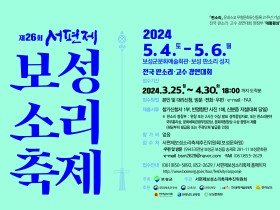
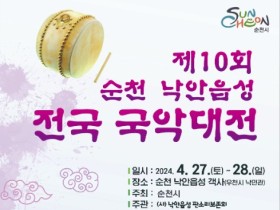
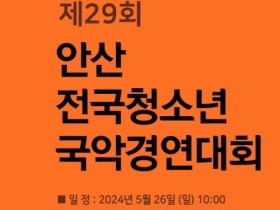
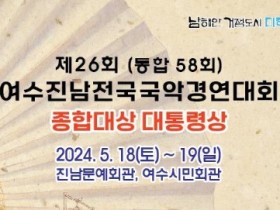
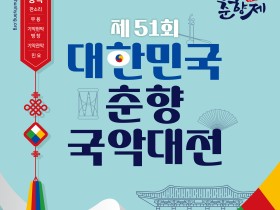
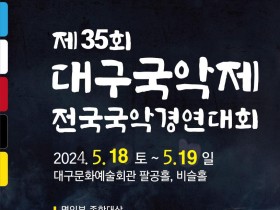
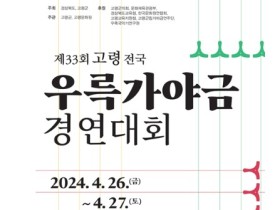
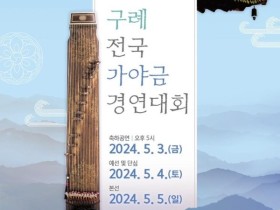
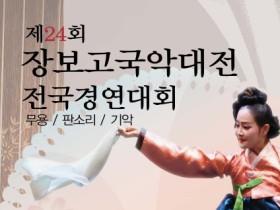
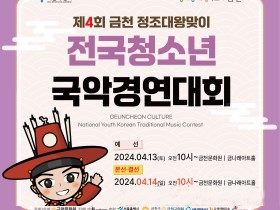
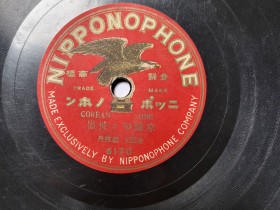
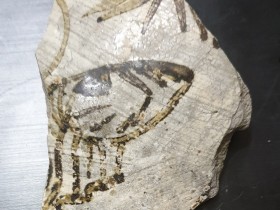
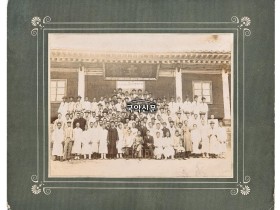
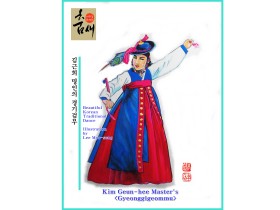

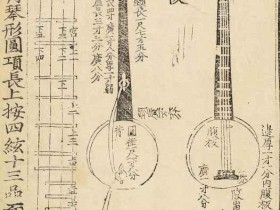
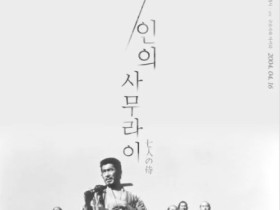
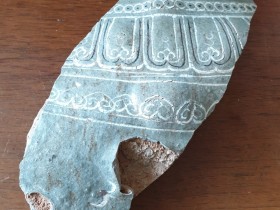
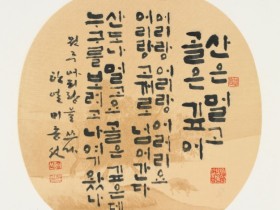
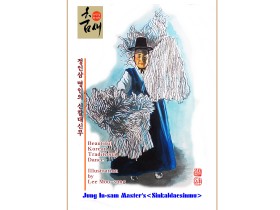
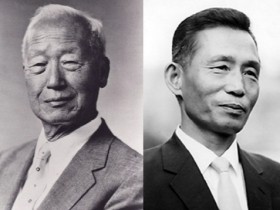
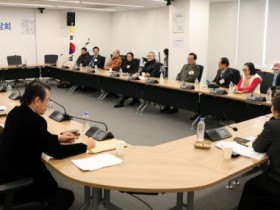
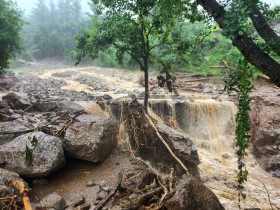
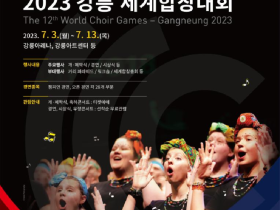
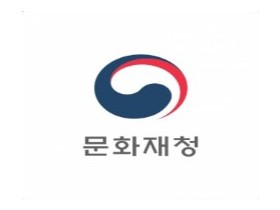
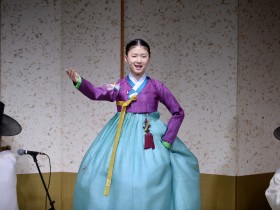

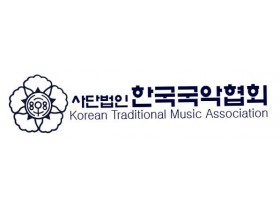
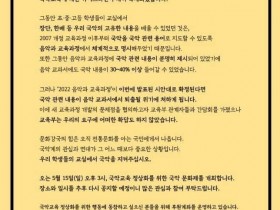
![[사설] 후반기 지역축제, 대면 개최 가능성 높다 [사설] 후반기 지역축제, 대면 개최 가능성 높다](https://www.kukak21.com/data/file/news/thumb-3534942082_xLDkmVCO_6c0ab4c0f9bda5791258891bcfab9234ab950fbd_280x210.jpg)
